Sign up for our daily newsletter
- Privacy Policy
- Advertise with Us

How to Check Whether a Power Bank Is Allowed on a Plane
Having extra juice for your phone is always handy, especially when you land in a new city or country. However, if you plan on bringing extra batteries or a power bank on the plane, you should ask, “Are power banks allowed on planes?” The answer, as you will soon learn, is not as straightforward as most would think.
Are Portable Chargers Allowed on Planes?
Where should i pack a power bank, can you take a 20,000 mah power bank on a plane, bringing multiple power banks on flights, safety checklist for carrying a power bank on a plane.
Power banks are hands-down one of the most necessary tech items to carry when traveling . However, just as with everything else, portable chargers are a regulated item for flights.
When it comes to determining whether airlines allow power banks on planes, you must consult two governing agencies: the Transportation Security Administration (TSA) and the Federal Aviation Administration (FAA). Both organizations have strict rules regarding what they consider “external lithium-ion batteries,” and this includes power banks and other portable rechargers.

In general, power banks can go on planes, as long as they meet the following criteria:
- All lithium-ion rechargeable batteries must be rated 100-watt hours (Wh) or less per battery.
- The power bank or rechargeable battery must not be damaged or recalled.
- The portable charger must be able to come out of your bag when you go through security.
- The power bank(s) you bring on board must be for your own personal use, not for sale or distribution.
If you have a portable battery rated between 101 and 160 watt hours, you can obtain airline approval to carry this power bank on the plane. However, you can only carry up to two battery packs of this size onto the airplane.
The rule here is simple: anything with a rechargeable lithium-ion battery must be in your carry-on luggage. This rule applies not only to laptops and smartphones but also to power banks and other portable batteries.

It may seem strange, but keeping these potentially explosive devices where they can be monitored is safer. Having a phone catch fire in the cabin is frightening, but it would be far worse in a cargo hold, no one can readily notice and stop the fire before it spreads.
If you accidentally took an oversized battery on a flight or left one in your checked luggage, it isn’t likely to cause a catastrophe, but there is a non-zero chance of disaster. A quick search for “exploding battery on a plane” will bring up plenty of cases, though generally, these fires have been quickly extinguished.
The only confirmed battery-related disaster was a UPS plane in 2010 that crashed at Dubai International Airport after a fire caused by a cargo of lithium batteries. This crash is a significant reason that restrictions on passengers carrying lithium batteries exist, and UPS now carries this kind of cargo in special fiberglass containers. There is also an (unsubstantiated) hypothesis that a cargo of lithium-ion batteries was responsible for the disappearance of MH370 in 2014.
Putting your batteries in your carry-on is easy enough, but that may not be enough to get you past security if you’re packing an energy source that could power a small village. However, it’s hard to know which power banks are allowed on planes, as they often use milliamp hours as their power measurement, not watt hours.
Here’s the formula to convert between units:
- Find your battery’s mAh number.
- Find the voltage (usually 3.6V/3.7V).
- Divide the mAh number by 1,000, converting it to Amp hours (Ah).
- Multiply the Ah number by the voltage to get the Watt-hours.
If you’re still in doubt, this table based on common power banks may help:
A great example of a power bank allowed on a plane without thought is the ZeroLemon MagJuice+ 10,000mAh Magnetic Wireless Battery Pack with Stand. This compact portable charger designed for iPhones, AirPods, and Apple Watches requires no cables or adapters, making it perfect for travel. The 10,000mAh battery contains enough juice to charge all three devices but isn’t too high of a capacity to meet airline requirements. Purchase the ZeroLemon MagJuice+ before December 17 to save 23% and pay just $45.99.
While you can’t bring a single power bank over 100Wh on a plane without getting permission, you can bring more than one power bank that adds up to or exceeds that number. Typically, you can travel with two power banks on a flight if each one meets the requirements established by TSA and FAA. However, each airline has unique rules. If you are traveling with someone who doesn’t have a power bank, you could also ask them to hold your additional bank for the flight.

Make sure you check this table before you fly to eliminate the possibility of any inconveniences at the airport and beyond. To avoid any power mishaps while flying, we suggest you:
- Keep your batteries in the cabin.
- Don’t take power banks over 100Wh without consulting the airline.
- Ensure your portable charger is properly working before taking it on the flight.
Armed with that information, you should be able to have a relaxing flight in your high-speed metal tube, flying several kilometers above the ground.
If you need recommendations for power banks allowed on planes, check out our guide on power banks made for laptops and our list of impressive small power banks .
Image credit: Pexels
Our latest tutorials delivered straight to your inbox
Megan Glosson is a freelance technology writer based in Nashville, TN. She has extensive experience working with everything from printers to smart home systems, and serves as the go-to “tech guru” for a small business that sells digital products. Megan has created thousands of articles for online publications and company blogs, including How-To Geek, Clean Email, and Review Geek. When she’s not writing, you will probably find Megan playing board games with her partner and two children or swimming in the pool. You can check out Megan’s entire portfolio on her website, https://www.meganglosson.com/.


An official website of the United States government
Here’s how you know
Official websites use .gov A .gov website belongs to an official government organization in the United States.
Secure .gov websites use HTTPS A lock ( Lock A locked padlock ) or https:// means you’ve safely connected to the .gov website. Share sensitive information only on official, secure websites.
Lithium batteries with more than 100 watt hours
Spare (uninstalled) lithium ion and lithium metal batteries, including power banks and cell phone battery charging cases, must be carried in carry-on baggage only.
With airline approval, passengers may also carry up to two spare larger lithium ion batteries (101–160 Wh) or lithium metal batteries (2-8 grams). This size covers the larger after-market extended-life laptop computer batteries and some larger batteries used in professional audio/visual equipment. There is a limit of two spare batteries per person for the larger lithium ion batteries described above (101–160 watt hours per battery. For more information, see the FAA regulations on batteries.
This instruction covers spare lithium metal and spare rechargeable lithium ion batteries for personal electronics such as cameras, cell phones, laptop computers, tablets, watches, calculators, etc. This instruction also includes external battery chargers (portable rechargers and power banks) containing a lithium ion battery. For lithium batteries that are installed in a device (laptop, cell phone, camera, etc.), see FAA regulations for "portable electronic devices, containing batteries."

PowerBankExpert.com is reader-supported. If you purchase products via the links on our site, we might earn affiliate commissions.
Can You Bring Your Power Bank On a Plane? 3 TSA Rules You Need To Know
Quick Answer Power banks are allowed on planes , but their capacity needs to be smaller than 100Wh and they can only be taken in carry-on luggage. Power banks between 100Wh and 160Wh need special approval to be allowed on board, while any battery over 160Wh is strictly prohibited on planes.
As always, there are more details and exceptions when it comes to airline rules and regulations. So let’s have a closer look at what types of power banks you’re allowed to bring on flights.
If you’re the visual type, feel free to watch this video in which I discuss most of the ideas in the article.
FAA and TSA Regulations Regarding Portable Chargers
The Transportation Security Administration (TSA) and the Federal Aviation Administration (FAA), recognized bodies in the United States, share the responsibility of ensuring a secure and highly functional aerospace system and safeguarding the country’s transportation networks to guarantee unrestricted mobility for individuals and commercial activities. They are the principal regulatory authorities dictating the type of items permissible on flights, including portable chargers or any other type of battery.
Pictured below, you can see the main rules when it comes to power banks:
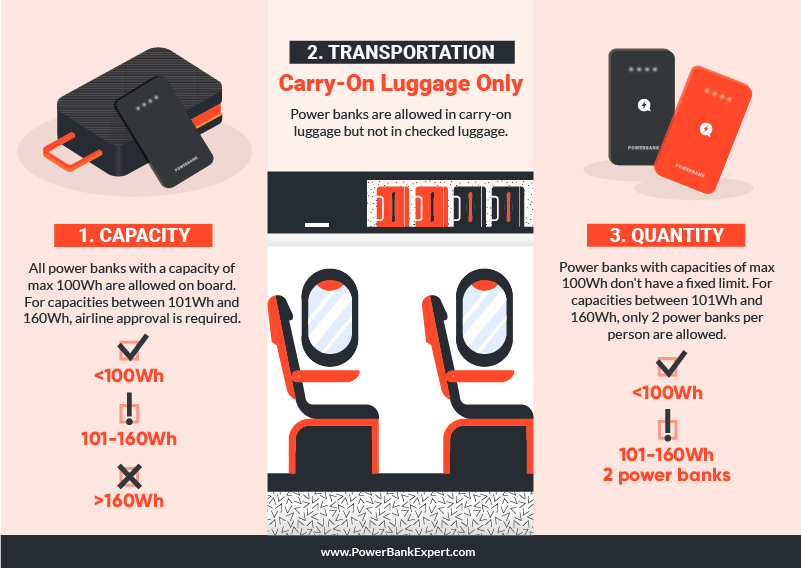
Let’s discuss these rules in more detail below.
1. Maximum Battery Capacity Permitted: 100Wh (or 160Wh With the Express Airline’s Permission)
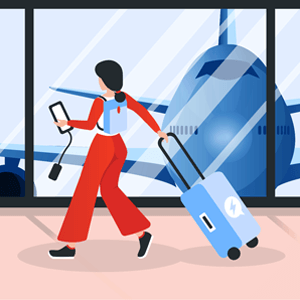
They also clarify that any external chargers or power banks are classified as batteries, and their capacity must not be over 100Wh.
This capacity is equivalent to 27000mAh in the case of regular power banks. Moreover, it states that batteries with power capacity between 101Wh and 160Wh require the airline’s approval, while those exceeding 160Wh are strictly prohibited on flights .
2. Portable Chargers and Other External Batteries can Only be Taken in Hand Luggage
The TSA adopts a clear-cut stance concerning power banks : these devices are only permissible in hand luggage but not in checked baggage . This regulation is driven by the potential risks associated with power banks, which can contain combustible substances, posing a fire or even explosion hazard during flights.
Understandably, if a fire were to occur, crew members would have a better chance of extinguishing it if the source is located in the passenger cabin, rather than in the cargo area.
Some passengers don’t know if power banks are considered standalone lithium-ion batteries or lithium-ion batteries contained in equipment. However, the U.S. TSA Pipeline and Security of Hazardous Materials Safety Administration describes power banks as “ UN3480, Lithium-ion batteries ” Thus, they must be transported accordingly.
If you do happen to pack your power bank in your checked-in baggage, you could be later called upon to remove it from your luggage, or worse, airport security can remove it themselves and confiscate it. Either way, you don’t want any of these to happen, so make sure to place your batteries in your carry-on baggage.
It is also essential to properly pack portable batteries, in a way in which they are protected from a potential short circuit. An efficient method to pack a power bank is using the retail pack. If the pack is lost, the terminals should be covered with tape, and then the battery can be put in a case, plastic bag, or protective pouch. It is essential to make sure that they can’t be activated by accident.
3. You Are Allowed a Maximum of Two Power Banks With Capacities Between 100Wh and 160Wh
Another crucial factor to note is that each individual is permitted to carry a maximum of two batteries with capacities between 100Wh and 160Wh , on the plane. Of course, with the explicit airline permission for each of them, as stated in the previous chapter.
There is no clear limit imposed by the TSA and FAA regarding the number of power banks under 100Wh you can carry. However, they do clearly state that all batteries must be for personal use only and that it’s not allowed to transport any batteries intended for later resale.
Non-US Airlines and International Airports’ Regulations for Battery Packs
If you are flying around Europe or Asia, the rules may differ from the ones in the USA. Therefore, you should check the rules of your airline company and on-route airports before your flight or even booking the ticket.
For example, while it is commonly allowed to have power banks up to 160Wh capacity with you, some airlines may restrict the maximum level by 100Wh.
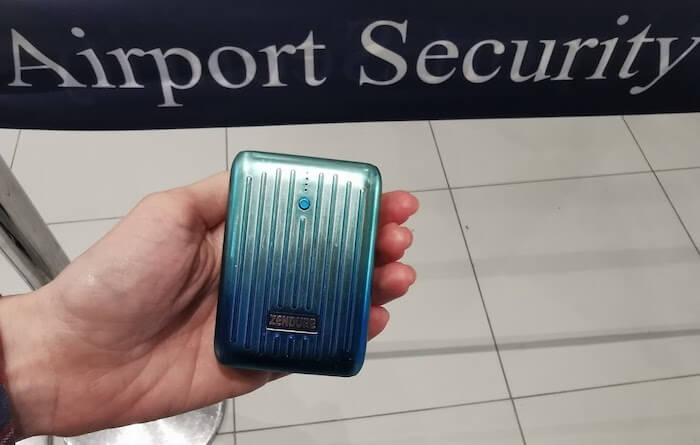
While the FAA is the governing body in the United States of domestic airlines, the International Air Transport Association (IATA) is a trade association of the world’s airlines, which helps to formulate industry policies and standards.
According to the document “passengers traveling with lithium batteries”, issued in February 2019, power banks are considered spare batteries, which must be individually protected from short-circuiting and carried in carry-on baggage only, regardless of the capacity.
It is also stated that each passenger is limited to a maximum of 20 spare batteries of any type without approval, as long as their capacity is below or equal to 100Wh. The operator may approve the carriage of more than 20 batteries.
However, passengers are permitted a maximum of 2 power banks between 100 and 160Wh in carry-on baggage only, and those with power banks and batteries of capacity over 160Wh must prepare them to be carried in cargo, in accordance with the 60th Edition of the IATA Dangerous Goods Regulations (DGR).
The following table shows a summary of such criteria:

Although most of the airports you’ll pass through implement the same rules and regulations as listed in this article, various airline companies and airports may apply different policies concerning power banks and other batteries, such as British Airways, which limit the number of batteries up to 100Wh in hand baggage to 4 rather than 20. Thus, it is advisable to contact your carrying airline in advance of travel as they may impose additional restrictions.
Another example is Thai Airlines, whose official policy is shown in the following picture:

This graph shows that the airline had been implementing these regulations as early as 2015, four years before the IATA document came into effect.
Please also note that different airlines might have different rules when it comes to batteries and power banks. We set up a few guides for Delta , United , RyanAir , and Emirates .
Make Sure the Capacity is Clearly Listed on Your Device
It may not always be stated in the airline’s policy and regulations, but you may find out upon arrival at the airport that the power bank should clearly showcase its capacity to comply with safety regulations. The INIU BI-B42 is an example of a power bank that clearly displays its output both in mAh and Wh:
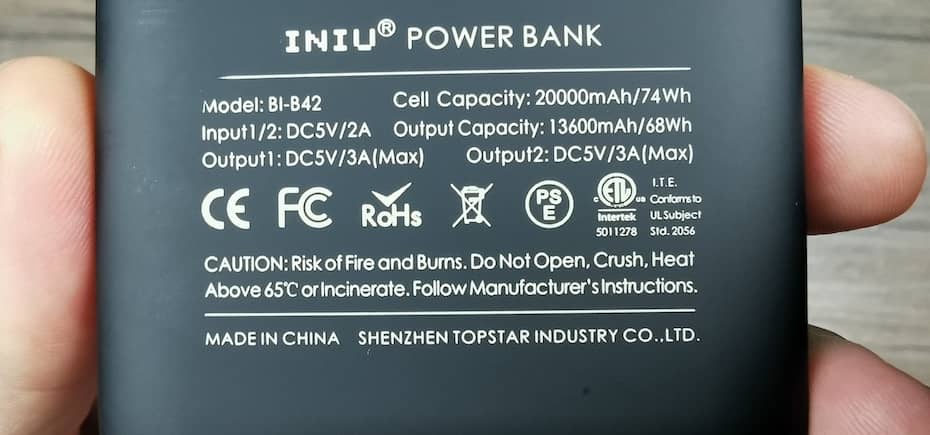
In case your portable charger doesn’t show the power output itself, bringing the original packaging might be helpful.
If the device’s power output is not labeled, airport security may decide to confiscate it. This situation has happened to a few people at the airport in Beijing. While passing the security check, they were asked to give up their power banks if they wanted to board the plane. After asking the reason why they were pointed to the written information letter which, unfortunately, was written in a foreign language for them.
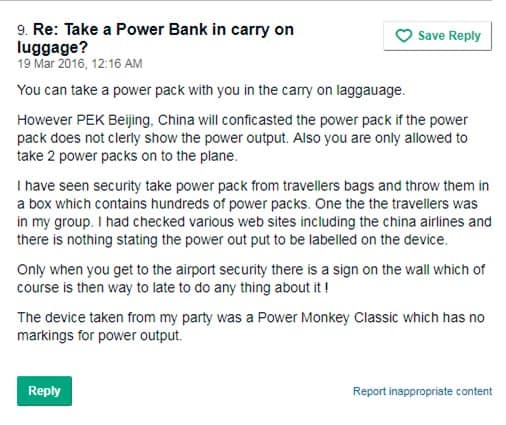
That’s why it’s recommended to double-check the rules of a particular airline and airport. A short call or email can save you a lot of headaches at the airport.
How to Get Past Airport Security With a Power Bank
During the security check, you’ll need to take out the power bank from your bag and place it on a tray alongside any other electronic devices you may have.
So anything from phones, laptops, e-cigarettes, smart watches, etc will go in the same tray as your portable charger. Another thing to keep in mind is not to cover these devices with any pieces of clothing or bags. They should go in different trays.
Ideally, all the items placed on the tray are clearly delimited from each other for easy identification by the security personnel. Here’s an example:
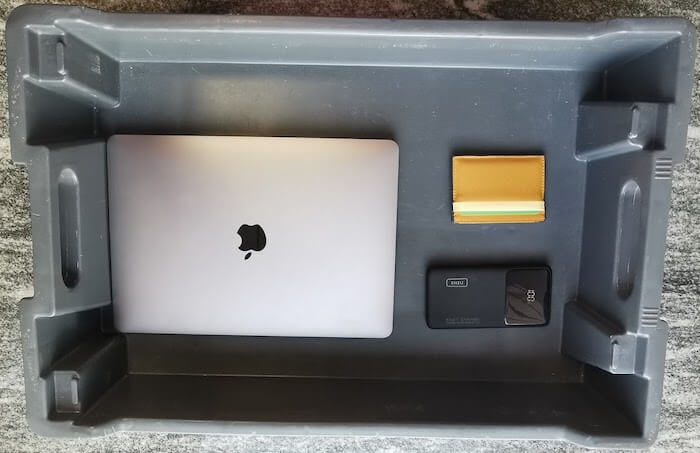
Pre-flight Checklist for Power Banks
The following list may look a bit daunting at first sight, but it does not take too much time to go through each item. And it might save your device from being confiscated.
- Make sure your power bank is under the 100Wh limit
- If your device is between 100Wh and 160Wh, ask for a permit before flying
- Do not take more than two power banks within 100Wh and 160Wh with you
- Make sure that your device has a power output sign on it
- Pack your power bank in your carry-on luggage
- To prevent short circuits, keep spare batteries in their original packaging, a battery case, or a separate pouch or pocket
- Make sure the power bank cannot be accidentally switched on
- Contact your airline before the flight and ask about their restrictions
- Check with the on-route airports and ask about their restrictions
If you had any direct experience with power banks or other batteries during your flights, share your story in the comments!
How to Determine the Watt-hours (Wh) Rating of a Battery?
If you’re unsure of how many Wh one of your batteries have, you can easily calculate it. In order to do so, you need to multiply the volts (V) by the ampere-hours (Ah). If you are using mAh, just divide the result by 1000 (to get to Ah). You can also use our very own mAh to Wh calculator below:
mAh to Wh conversion calculator
Energy result in wh.
* Please note that the voltage of the average power bank is 3.7V. You can use this value as a base for calculating the Wh of your device. However, if possible, check your batteries’ specifications and input the exact voltage for your product. More info about the mAh to Wh calculator .
What You Should Know About Other Types of Batteries
There are different types of batteries that people carry while traveling, so airlines also set regulations for them. Most types of batteries are allowed in carry-on baggage in the aircraft, of which only some are also allowed in checked luggage. Besides, some batteries taken on the aircraft have to be discharged.
Alkaline Batteries
Generally, batteries used to power small electronic devices are allowed in both carry-on and checked luggage. These include AA, AAA, C, and D, as well as 9-volt and button-size battery types. Besides, one may take rechargeable batteries such as NiMH or NiCad, which are commonly used in devices such as flashlights or emergency medical equipment. These should be safely packed or placed in the device.
Lithium Batteries
Lithium batteries are allowed only in carry-on baggage. Power banks fall under the lithium batteries category, so the power, size, and weight restrictions are similar. Lithium batteries are used to power cell phones , laptops, or radio-controlled toys. Only those that don’t exceed the limit of 25 grams of Equivalent Lithium Content (ELC) are allowed onboard the aircraft.
A measurement of ELC to watt-hours is eight grams ELC equals 100 watt-hours. To be exactly sure of this measurement and whether the battery is allowed on the airplane, it’s recommended to consult with both the airline and the manufacturer of the device.
Spillable Wet Batteries and Non-spillable Wet Batteries
Spillable wet cell batteries are a type of battery used in bicycles or scooters and are not allowed on the plane either in checked or carry-on luggage.
Nevertheless, battery-powered wheelchairs are allowed as long as the battery is removed from the device, which will be later placed in a special container. Passengers with this type of wheelchair should inform the airline employees that they intend to travel with this kind of battery
If the battery used in a wheelchair is non-spillable, it is allowed on the aircraft. However, these should be rated at 12V and 100Wh. Two spare batteries per passenger are permitted.
Batteries Within Devices
Numerous portable gadgets, including shavers, flashlights, toys, and more, incorporate internal batteries. These items can be stowed in checked luggage, but measures should be taken to avoid any damage or potential short circuits. It’s essential to ensure that the device is powered off, and precautions are taken to prevent it from inadvertently turning on.
However, there’s an exception to this guideline for electronic cigarettes and vaporizers. These items are not permissible in checked baggage and must instead be transported in carry-on luggage.
The following is a list from the FAA with the rules regarding taking batteries on planes as of 2016:

Why are power banks regulated by the TSA?
Power banks and other Li-ion batteries have come under scrutiny pretty recently. As battery technology improved, more and more battery-powered items found their way onboard planes. However, given their relatively unstable nature, accidents were bound to happen.
After a series of battery-related incidents, some of them pretty serious, they became a subject of regulation. In the image below you can see the evolution of battery-related incidents on planes.
For more information on the topic, please visit this page .
What Size Portable Charger Can I Take on a Plane?
You can take any power bank under 100Wh (under 27000 mAh) without any type of special approval. Power banks between 100 and 160 Wh require special approvals from the airline before the flight. Anything above 160Wh is not allowed on planes.
Can Portable Chargers Go Through Airport Security?
Yes, portable chargers can go through airport security as long as they are within the designated capacity limits imposed by the TSA.
Do I Have to Take Out the Portable Chargers for TSA?
During the security check, you’ll be required to take out any portable chargers and place them in a separate tray alongside other electronics such as laptops, phones, or tablets.
Can the TSA Confiscate My Portable Chargers?
If the capacity of the portable charger is over the allowed limit, or if the battery shows signs of danger (such as bloating ), the TSA will most likely confiscate your power bank.
How Many Power Banks Can I Take on a Plane?
If your power banks are under the 100Wh limit, the is no cap on their number. If your batteries are between 100Wh and 160Wh AND you also have approval for taking them on board, then you’re allowed a maximum of two pieces.
Can I Bring a 50000mAh Power Bank on a Plane?
A 50000mAh power bank has the capacity equivalent of around 185 Wh. This is over the maximum limits of both 100Wh and 160Wh (with airline permission). So you cannot bring such a large power bank on a plane. But you could, for example, bring two different power banks of 25000mAh each, since each of them would be under the 100Wh limit.
Can I Take Portable Chargers in My Checked-in Luggage?
No, portable chargers can only be taken in carry-on luggage.
Related Articles:
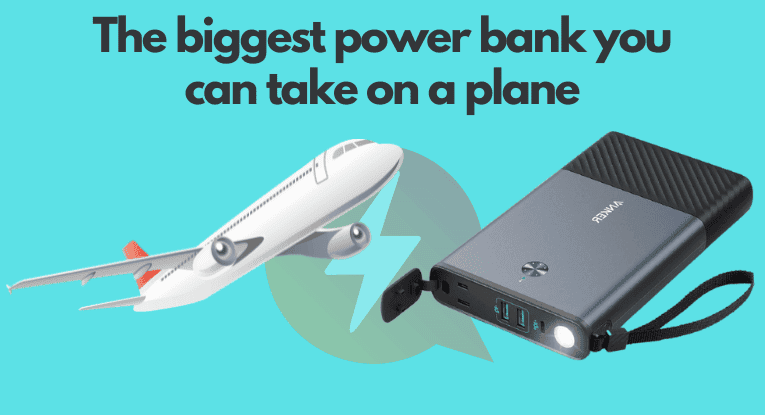
Written by Radu Updated January 19, 2024
As a digital nomad, I always travel with a power bank. It’s basically one of the few indispensable items I own. Being involved in Power Bank Expert allows me to share my knowledge on this exciting topic with people that might need help deciding which charging option is best for them.
Leave a Comment Cancel reply
Can You Bring A Powerbank On A Plane? Your Essential Guide
If you’ve never flown with a power bank previously and you’re not sure what rules you need to follow, you’re definitely in the right place. I’ll tell you everything about flying with portable chargers, including how many power banks you can have in your bags!
Can you bring power banks in carry-on baggage or checked luggage, are there restrictions on the size and capacity of the chargers, and which power bank is the best for travel are just some of the questions I’ll answer in this detailed guide!
Can You Bring A Powerbank on A Plane?
The short answer is yes, you can absolutely bring a power bank on a plane. Powerbanks are allowed inside the cabin but they’re not allowed in checked baggage, so if you’re planning to pack some sort of portable charger for your electronic devices, you better bring it on the plane!
Limitations on Size & Capacity of Powerbanks
The Transportation Security Administration (TSA) has some rules and regulations regarding lithium metal and lithium-ion batteries. For non-rechargeable batteries, it’s 2 grams of lithium per battery, and for a rechargeable lithium-ion battery, it’s a maximum of 100 watt-hours (approximately 27,000 mAh).
It is possible to have a large lithium battery in your carry-on luggage (up to 160 watt-hours), but you need the airline’s approval, otherwise, they will likely confiscate it at the security checkpoint.
Additionally, TSA doesn’t really have a quantity limit for lithium batteries and portable chargers, so you could technically pack a suitcase full of them.
However, they do state that any spare batteries and power banks must be for the personal use of the passengers, and if you show up at security with 15 power banks, they will likely find you suspicious and think you’re trying to resell them for financial gain.
Best Powerbank for International Travel
I’ve been using the Anker PowerCore II for almost three years, and I’ve only got words of praise for it. It has a capacity of 20,000 mAh, which is enough to charge my smartphone four times. If your phone has a smaller battery capacity (mine’s 5000 mAh), you can probably get an extra charge or two from it.
Also, I haven’t really noticed a decline in the power bank’s capacity, despite almost daily use for the past three years.
What I like the most about this power bank is that it’s got two outputs for charging; a fast-charging 18W one, and a slower 12W output. Both are USB type-A outputs on my power bank, but there are plenty of newer models with USB type-C and other options.
Keep in mind that the PowerCore II is so old that it charges via a micro USB port, so you better stick with a newer model if you don’t want to carry three different cables around everywhere.
The only downside of this power bank is that it’s quite heavy, but that’s going to be the case with every 20,000 mAh external battery. The bigger the capacity, the heavier the power bank, and you’ll learn to live with it eventually. I’ve gotten used to the weight, plus the power bank is really compact and I’ve managed to fit it into some really small purses.
I’ve taken this power bank to probably half a dozen different countries, it’s been on road trips with me, on planes, boats, trains, and every other mode of transport. Also, not an outing goes by without someone asking me if I brought my power bank because they need to charge something.
Tips to Ensure the Safety of Your Powerbank During Travel
If I’m being perfectly honest with you, I’ve previously taken zero steps to ensure the safety of my power bank during travel. But I recognize I’m in the wrong here because power banks are sensitive to temperature and humidity, so if you’re in extremely hot or cold surroundings, the portable charger could malfunction.
It’s best to put it in a case and store it inside a dedicated pocket in your bag, so it doesn’t bounce around too much. It’s also smart to just take remove any cables from it when you’re not charging anything (something I honestly never do), and you should avoid stacking any heavy objects on top of the power bank.
Also, avoid storing it next to water, food, or any other liquids that could spill and get inside the opening of the portable battery. Most power banks have built-in safety features, so you don’t have to think too much about how you’re transporting the charger.
Frequently Asked Questions
Are we allowed to bring multiple power banks on a plane.
You are allowed to bring multiple power banks on a plane, as long as each battery has a capacity of less than 100 watt hours, which is approximately 27,000 mAh. You will need airline approval to bring up to two power banks with a capacity of 101-160 watt hours (up to 43,000 mAh).
Is it required to declare my power bank at the security checkpoint?
If you’re traveling with a power bank that’s larger than 27,000 mAh, you will need to declare it because those power banks can only be brought on the plane with airline approval. I haven’t declared a smaller power bank at the security checkpoint, but I always take it out for the scanner.
Can I use my power bank during the flight?
Yes, you can use your power bank during the flight. Just keep your devices plugged in and let them charge, so you’re ready to take lots of photos and videos as soon as you land at your destination.
Do I need to fully charge my power bank before boarding the plane?
It’s recommended to fully charge the power bank before boarding the plane, but it is by no means necessary.
RELATED POSTS:
LAPTOPS ON A PLANE (HOW MANY CAN YOU BRING?)
CAN YOU TAKE BATTERIES ON A PLANE?
About the Author Anna Timbrook
Anna is the co-owner of expert world travel and can't wait to share her travel experience with the world. With over 54 countries under her belt she has a lot to write about! Including those insane encounters with black bears in Canada.
Leave a Comment:
Save my name, email, and website in this browser for the next time I comment.
- Overview Guide
- 1 Week Itinerary
- Train Journeys
- Epic Drives
- Stunning Lakes
- Historic Castles
- Lauterbrunnen
- Grindelwald
- Chocolate Tours
- Swiss National Park
- Majestic Mountains
- Spectacular Waterfalls
- Famous Things
- Tasty Fondue
- 10 Day Itinerary
- Cherry Blossoms
- Tokyo Shrines
- Dos and Don’ts
- Osaka Guide
- Osaka Itinerary
- Osaka or Kyoto
- Kyoto Day Trips
- Matsumoto Castle
- Tokyo Luxury Hotels
- Island Hopping
- Best Campsites
- Driving Tips
- Beaune, France
- Barcelona Itinerary
- Spain Itinerary
- Greece Itinerary
- Italy Road Trips
- Berlin Day Trips
- Norway Northern Lights
- Netherlands National Parks
- Mostar, Bosnia
- Best Airlines
- Midwest Ski Resorts
- Florida RV Parks
- Washington RV Parks
- Oregon RV Parks
- Utah Camping
- Texas Camping
- Chicago National Parks
- East Coast National Parks
- Colorado National Parks
- Joshua Tree
- Yellowstone
- Alberta Hikes
- Flashlights
- Water Filters
- Sleeping Pads
- Solar Lanterns
- Tent Brands
- 4-Person Tents
- 4 Seasons Tents
- Backpacking Tents
- Beach Tents
- Cabin Tents
- Multi-room Tents
- Pop-up Tents
- Truck Bed Tents
- Underwear (Men)
- Backpacks Under $100
- Microspikes
- Boonie Hats
- In The World
- New Zealand
- Hardisde Luggage
- Lightweight Luggage
- Luggage Sets
- Spinner Luggage
- Durable Suitcases
- Duffel Bags
- Kids Luggage
- Teen Luggage
- Space Saving Luggage
- Business Carry-Ons
- Garment Carry-Ons
- Suitcases Under $50
- Travel Briefcase
- Zipperless Suitcases
- Rolling Briefcase
- Luggage Straps
- Luxury Brands
- American Tourister
- AmazonBasics
- Delsey Chatelet
- Anti-Theft Backpacks
- Backpacks Under $50
- Baby Carrier Backpacks
- Cooler Backpacks
- Backpacking Backpacks
- Climbing Backpacks
- Backpacks for Back Pain
- Beach Backpacks
- Hiking Backpacks
- Business Travel Backpacks
- Laptop Backpacks
- Backpacks for Tablets
- Commuter Backpacks
- Travel Backpacks (Men)
- Travel Backpacks (Women)
- Waterproof Backpacks
- Wheeled Backpacks
- Down Jackets
- Down Parkas
- Fleece Jackets
- Hardshell Jackets
- Rain Jackets
- Softshell Jackets
- Eco Friendly Jackets
- Gore Tex Alternatives
- Heated Jackets
- Lightweight Jackets
- 3-in-1 Waterproof Jackets
- Parajumper Jackets
- Rain Poncho
- Ski Jackets
- Travel Hoodies
- Travel Jackets
- Winter Coats
- Helly Hansen
- Mammut Jackets
- Patagonia Nanopuff
- Survival Jackets
- Flower Captions
- Waterfall Captions
- Tree Captions
- Sunset Captions
- Sunflower Captions
- Rainbow Captions
- Paddle Boarding Captions
- Hot Air Balloon Captions
- Kayaking Captions
- Airplane Captions For Instagram
- Forest Captions

Airline Restrictions On Power Banks – A Traveler’s Guide
As a seasoned traveler, a portable charger is essential for me. I’ve tested many power banks to fuel my devices on the go. I’ve done this while hiking remote trails and navigating chaotic airports worldwide.
However, airline regulations on lithium-ion batteries can be confusing and vary between carriers. I’ve become an expert in navigating the rules around power banks through trial and error.
In this guide, I will share Airline Restrictions on power banks. I will also share Power Bank Specs, including Watt-Hours, Size, and Capacity allowed by airlines. Let’s go to start.
Understanding Airline Restrictions on Power Banks
Portable chargers, or power banks , have become essential gear for my adventures. But Lithium-ion batteries some airlines regulate
So, avoid issues at the airport, and do your homework on the specific airline’s policies. Most comply with safety standards set by the UN’s International Civil Aviation Organization . Power banks are limited to 100 Watt-hours (Wh) or less for carry-ons and 160 Wh in checked bags. But some Asian and European airlines allow even less. Check the latest rules on the airline’s website and pack.
I like compact yet fast-charging power banks from Anker, RAVPower, or Xiaomi for short trips. The power banks offer at least 10,000 milliamp hours (mAh). They can fully recharge my phone a couple of times. For more extended getaways, a higher-capacity 20,000-30,000 mAh charger gives me peace of mind. I always label my power bank with my name and phone number in case it gets misplaced.
Take your power bank out of your bag at the airport and place it in the bin for screening. Some airports have additional lithium-ion battery checks, so give yourself plenty of time. Once cleared, power your devices and start charging when you reach your gate.
By understanding the rules and coming prepared, you’ll never have to ration your phone’s battery life on a trip again. Staying connected and powered up is vital to traveling well in today’s digital age. You can confidently explore the world with the right power bank as your companion.
1. The Basics of Power Bank Restrictions
The basics: Power banks, also known as portable chargers , provide extra battery life for your devices on the go. They’re measured in milliamp hours (mAh) and watt-hours (Wh).
Most airlines follow guidelines by the (ICAO). They limit power banks to 100Wh. Why the limits? Lithium-ion batteries can overheat or short circuit, though the risk is small. The regulations aim to minimize potential fire hazards in the air.
Each airline has its rules, so check with them before you fly. As a rule of thumb:
- Major US airlines like Delta, American, and United allow up to 100Wh. They also allow two spare lithium-ion batteries.
- European carriers such as Lufthansa, KLM, and British Airways have the same 100Wh limit. However, some only permit one spare battery.
- Asian airlines tend to be more restrictive, capping power banks at as little as 30Wh for carry-on. Singapore Airlines is an exception, allowing up to 100Wh.
- Budget airlines can vary wildly, so verify rules ahead of time. Some may not permit any spare lithium-ion batteries.
My power bank picks Anker PowerCore (any size up to 100Wh) for value, durability, and speedy recharging. Mophie Powerstation PD for high-speed USB-C charging. Crave PowerPack for ultra-slim portability. Label all your chargers clearly, keep them in your carry-on bag for easy access, and turn off unused devices to conserve power.
By understanding the rules and coming prepared, you’ll stay fully charged wherever your adventures take you.
2. Airline-Specific Regulations
As an experienced traveler, I’ve navigated power bank restrictions on many major airlines. Each carrier has guidelines, so do your homework before packing a portable charger in your carry-on .
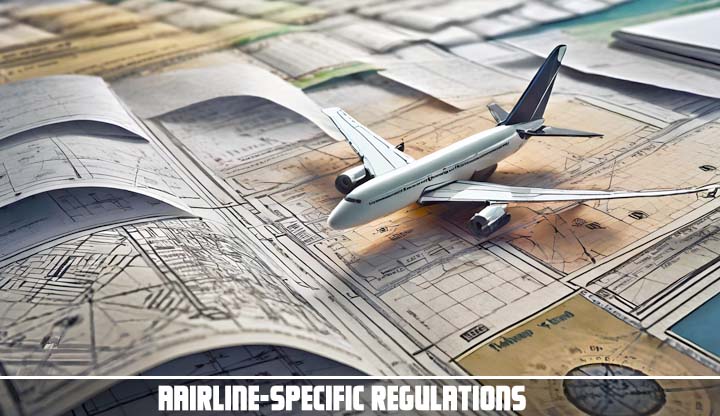
American Airlines
American Airlines follows international standards, allowing power banks up to 100 Wh (27,000 mAh) in carry-on bags. You can bring two spare lithium-ion batteries, each under 100 Wh. Check their website for details and updates before your flight.
Delta Air Lines
Delta Air Lines also exceeds the 100 Wh carry-on limit for portable chargers and two spare batteries. They prohibit power banks in checked baggage , so keep them in your carry-on. Ensure each battery is protected correctly and clearly labeled with its watt-hour rating.
United Airlines
Portable chargers up to 100 Wh are allowed in United carry-on bags, with two spare lithium-ion batteries under 100 Wh each. Power banks over 100 Wh cannot go in carry-on or checked bags. United Airlines recommends that you carry supporting documentation for medical devices with built-in batteries that exceed 100 Wh.
Check with them directly about their power bank policies for airlines not listed. When flying on multiple carriers for one trip, adhere to the most stringent regulations to avoid issues. Prepare for additional screenings of your charger. Be ready to power it on if requested by security.
Staying up to date with airline rules will ensure you have power and peace of mind on your next adventure. Adequately preparing your portable charger is essential.
Power Bank Specs – Watt-Hours, Size, and Capacity Limits by Airline
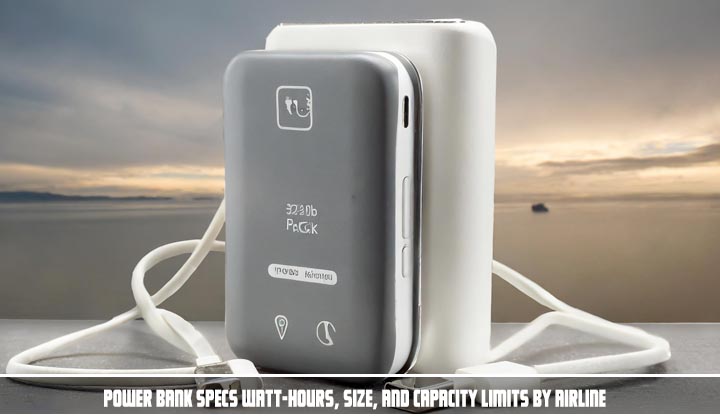
I’ve learned the hard way about airline restrictions on power banks. On my first international flight, I had a massive 30,000 mAh power bank confiscated at the gate. This happened because it exceeded the allowed watt-hour rating. Lesson learned! Now, I ensure all chargers follow regulations before packing them in my carry-on.
Power banks, also known as portable chargers or battery packs , provide backup power for your electronic devices on the go. They’re rated by watt-hours (Wh) or milliamp hours (mAh), indicating how much charge they hold. Some airlines enforce even stricter limits, so always check with your specific carrier.
Why the restrictions? Lithium-ion batteries, like those in power banks and laptops, may overheat or catch fire. Airlines aim to minimize potential hazards, especially in aircraft cargo holds and overhead bins. This is rare. They reduce safety risks by restricting the size and number of portable chargers. This allows you to stay powered up during your flight.
To avoid issues at the airport, choose a power bank no larger than 26,800 mAh or 100 Wh. The power bank should meet the requirements for major airlines, such as Delta, American, and United. For smaller carriers, check their website for details.
A 10,000 mAh charger is always a safe, travel-friendly option when in doubt. Make sure any batteries are correctly installed. Cover the terminals to prevent overheating. Pack it in your carry-on where crew members have easy access in case of any issues.
With some forethought, you can navigate airport security. You can stay plugged in wherever your adventures take you. A little knowledge goes a long way in helping frequent flyers avoid power struggles.
Top Portable Chargers That Meet TSA Requirements
As an avid traveler, I’ve relied on portable chargers for years to keep my devices powered up. Through trial and error, I’ve found some chargers that meet TSA requirements. They work great for travel. Here are a few of my top recommendations:
Anker PowerCore 10000
This compact charger packs a punch with 10000 mAh of power, enough to charge most phones 2- 3 times. It’s lightweight, affordable, and allowed on all airlines. Anker is a reputable brand, and this charger charges devices efficiently. I’ve used mine for years and love how portable yet powerful it is.
RAVPower 16750mAh Portable Charger
For longer trips or if you need to charge multiple devices, this RAVPower model is excellent. It has a massive 16750 mAh capacity and 3 USB ports. You can charge a phone, tablet, and accessories simultaneously. It recharges in 10-11 hours.
The digital display shows the remaining power, so you know when it needs recharging. It’s a bit bulkier, but the extra power is worth it. Check with your airline for their size limits to make sure it complies.
Jackery Portable Travel Charger Bar 6000mAh
This compact, lipstick-sized charger is perfect for short trips or emergency charging. It packs 6000 mAh of power, enough for 2-3 phone charges, and the small size fits easily in your pocket bag. It has an integrated Lightning and Micro USB cable, so there are no cords to pack, and the aluminum casing is durable. The downside is that it may not suit larger phones and tablets, but this little charger can’t be beat for quick top-ups.
This guides you in choosing a reliable, flight-friendly portable charger. Use the correct charger and follow airline regulations. You’ll have power whenever and wherever you need it.
Smart Tips for Flying With Power Banks
Here are some of my go-to strategies for keeping your devices charged on the go without hassle:
Label Everything
Ensure any power banks or charging cables you bring are clearly labeled with your name and contact information. This helps identify the items as yours if they get temporarily misplaced during security screenings. It also helps in the overhead bin shuffle. TSA agents may need to power on your charger to test it. Labeling avoids confusion and ensures it finds its way back to you.
Know the Rules
Do your research on the specific regulations of any airlines you’re flying. Most follow the FAA’s guidance, allowing power banks up to 160 Wh (watt hours) in carry-on bags.
But, some airlines have extra restrictions. Before you fly, check with the airline directly to confirm their latest policies. Staying up to date on the rules will give you peace of mind that your trusty charger can come along for the ride.
Pack Strategically
I always pack my smaller power bank in my carry-on bag, so I have it handy during long flights or unpredictable travel delays. I’ll bring a larger charger in my checked bag for longer trips to use at my destination.
This avoids the risk of overpacking my carry-on with too many heavy electronics. Make sure any lithium-ion batteries are protected from damage or overheating. This applies regardless of where they’re packed.
Charge in Cycles
I charge my devices in cycles to maximize usage of your power bank’s charge over multiple days of travel. I start by charging my phone, then switch to my tablet or wireless headphones as needed.
I wait until each device is fully charged before moving on to the next one. This avoids quickly draining the power bank’s battery. It charges multiple power-hungry devices simultaneously.
Some smart charging techniques can keep all your essential tech juiced for a surprisingly long trip. One quality power bank is enough.
As seasoned travelers know, portable chargers can be lifesavers on long flights or extended layovers. You’ll confidently breeze through airport security by understanding the rules and regulations around power banks.
You’ll also ensure you always have enough juice to capture those memorable moments. Staying up-to-date on the latest technologies and airline policies will help future-proof your gear.
It will also open up more opportunities for adventure. With a suitable portable charger in your carry-on, the world is your oyster. Where will your next flight take you? Pack your bags, charge your tech, and get ready to embark on your next journey powered up and without worry. The open skies await!
Let me know if you have any questions about navigating power bank restrictions. Safe travels!

Jeffrey C. Fields is an experienced travel writer passionate about uncovering the world’s hidden gems. With years of global exploration, he shares unique insights into diverse destinations, offering readers a fresh perspective on our planet’s beauty.
1 thought on “Airline Restrictions On Power Banks – A Traveler’s Guide”
- Pingback: What Type Of Battery Is Not Allowed On Airplanes
Leave a Comment Cancel reply
Save my name, email, and website in this browser for the next time I comment.
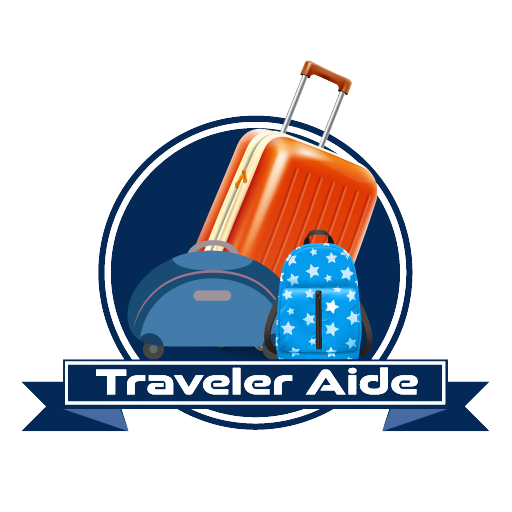
The Traveleraide is a participant in the Amazon Services LLC Associates Program which is an affiliate advertising program designed to provide a means for sites to earn advertising fees by advertising and linking to Amazon.com. Amazon, the Amazon logo, Amazon Supply, and the Amazon Supply logo are trademarks of Amazon.com, Inc. or its affiliates. As an Amazon Associate I earn from qualifying purchases.
We Are Here To Assist You
Contact us today.
© 2023 All Rights Reserved by Traveleraide
Where charging comes to life
Are Power Banks Allowed on Planes? Everything You Need to Know About Flying with a Portable Charger

Update: We’ve created the ultimate guide to flying with a power bank, including a list of airlines and their portable charger rules. Download in the sidebar .
Knowing what technology you can and cannot take when flying poses some challenges. This is especially so in an era of strict rules, unruly TSA agents, or being dragged off a flight. One of the more complicated issues that travelers encounter when flying is what to do with power banks. If you’re worried about your charger being confiscated or are generally concerned with the safety aspects of being in the air, here’s everything you need to know about flying with a power bank .
Are Power Banks Allowed on Planes?
In short, yes you can fly with most power banks. That’s great news if you’re in need of a quick recharge when you touch down or if you’d like to be able to do work when 40,000 feet in the air. However, like all great things there is a catch. First, power banks, which use lithium-ion batteries, need to be stored in carry-on baggage only. Second, power banks over a certain size cannot be brought onto flights at all.

Why Can They Only Be Brought on with Your Carry-On Baggage and Not Checked in with Your Luggage?
On the surface it might seem slightly illogical since, either way, both of them will be on the plane. A closer look reveals a different story. Since some “batteries contain both the oxidizer (cathode) and fuel (anode)” there is always that slim chance that the internal battery will react chemically, explode, and cause a fire. Of course, not all batteries react that way, but as an issue of safety, airlines put blanket restrictions on batteries. If a battery causes a fire in the cabin, the crew can put it out with minimal damage and everyone can get to their destination relatively unharmed. If, however, a fire starts in the cargo hold, not only is it harder to put out, but another flammable substance that’s been checked in could react with the fire causing serious damage to the plane and even losses of life.
What Sized Power Banks Are Restricted?
The restrictions as per the Federal Aviation Administration are for lithium-ion batteries rated above “100 watt hours (Wh) per battery” . Anything above that limit is restricted. While that limit allows most power banks to be brought on flights, there are still consumer power banks that exceed that limit. Thankfully with prior approval from an airline, power banks rated 100.1-160 watt hours can be taken onboard.
Why Is Wh Used and Not mAh?
While power banks are marketed by their milliampere hours (mAh), this standard is only useful when comparing products that use the same type of battery e.g. lithium ion, alkaline cells, or NiHN cells. Whereas, watt hours refers to the fact that the battery can supply a certain amount of watts per hour. This is a better standard as watt hours provides a consistent way to compare different types of batteries, rather than the same type of battery.

How Is Wh Calculated?
Calculating the watt hours of your power bank is particularly easy and can be done with your phone’s calculator or even in your head. Here’s the formula:
(mAh)/1000 x (V) = (Wh)
In other words, Milliamp Hours/1000 x Nominal Voltage = Watt Hours
What Are Those Measurements?
Here is a quick rundown to help you.
- Milliamp Hours (mAh): How many hours the electric charge can be supplied.
- Nominal Voltage: “The midpoint between full charged and fully discharged based on a 0.2C discharge” . For a lithium-ion cell, this is typically 3.7V.
- Watt Hours: A unit of energy that indicates the amount of watts supplied in an hour.
The formula to find the Watt Hours of RAVPower’s 16750mAh Power Bank will look like this:
16750mAh/1000 x 3.7V = 61.98Wh
As it’s under 100Wh, you can bring it with you on the airplane.
What if we tried RAVPower’s upcoming 32000mAh Power Bank:
32000mAh/1000 x 3.7V = 118.4Wh
As it’s over the limit, you would need approval from the airline to bring it on.
Thankfully, all recent RAVPower power banks have the Wh printed onto the charger so you don’t need to do the math yourself. Simply show airport security if there is ever any confusion.

Other Questions:
What if my charger exceeds the 160wh limit.
In that case, you need special permission to bring it on. It will also be packed in a special area of the cargo hold as per the IATA’s Dangerous Goods Regulations.
Does My Power Bank Need Any Protections to Fly With?
Yes, it means that battery terminal ends must be protected from short-circuiting. All RAVPower power banks feature short-circuiting as well as a number of other protections so you may fly with them. If, however, you pack a power bank that does not feature internal protections, there are safety methods you can take. These include makeshift safeguards like leaving it in its original retail packaging or covering the ports with tape. Not exactly convenient.
Are There Any Size Limits?
Non-rechargeable lithium metal batteries have a 2 gram per battery restriction on airlines. Power banks, however, use a rechargeable lithium-ion battery so the only size limit is the aforementioned 100Wh.
When travelling with technology it’s always better to be informed than to fly clueless. From storing power banks in your carry-on, to size limits, we hope you’re better prepared for future air travel.
For RAVPower’s selection of power banks, please click here To connect with us on social media, follow our Facebook , Twitter , & Instagram pages
For a power bank you can take while flying, get RAVPower’s 22000mAh Portable Charger here .
Remember to let us know in the comments what you use your power bank for when flying ., flying with a power bank ebook download, 177 replies to “ are power banks allowed on planes everything you need to know about flying with a portable charger ”.
I use my RP-B055 to power my portable CPAP machine. This allows me to travel on long distance flights without worrying if the power plug works on the aircraft, covers off spotty power in remote locations, and also allows me to go wilderness camping off the grid for multiple nights. The run time of a 99 AH power pack over the largest available battery from my CPAP supplier (5.5 AH) means a lot more freedom!
Wow that’s a great way to use our power bank. Quite novel too. We’re glad we make flying and camping easier!
Can I know how many night of CPAP use it will last on one full charge before charging.
Usually three nights
This is the information I’ve been looking for! Been looking for a cheaper alternative to power my CPAP machine when I travel but couldn’t seem to find anyone using this on CPAP so I was worried. Ordered one for myself upon reading your comment!
In the last year or two there have been some changes in the rules for chargers and power strips on cuise ships. Particularly with regard to surge supression, which apparently interacts with the electrical systems of these ships in potentially dangerous was. I have the Ravpower rp-pc028, 6 port usb hub. Does that unit have surge suppression? Have you had any feedback about this charger vis a vis cruise ships?
All our USB Chargers have surge protection, and from what we understand, they can also be used on cruise ships. Wishing you the best on your travels.
You need to update your advice given in light of restrictions in and out of certain countries deemed at risk of terrorism. There is a physical size limit on such flights …. the thickness of the powerbank is usually the limiting factor…1.5cm.
Thank you for the heads up. We will update this page to reflect this.
The restriction is only for few countries, most of them from middle east on flights to US or UK.
I HAVE PACKED POWER BANK NEVER OPENED FROM ORIGINAL PACKAGE. CAN I TAKE THEM ON THE PLANE
If the battery size is not too big, then it should be okay.
Hi there just wonder if RAVPower 27000mAh Portable Charger with Built-In AC Outlet able to bring up to the plane? Understand that it is 101W need approval from the airline and RAVPower 27000mAh is at 100W. Will that 1W difference make the airline to reject for safety reason?
You are right that 101W devices need approval, however, the RAVPower 27000mAh is at 99.9W – just under the limit. You should be able to fly with it. Have a safe trip.
What if I brought 3power banks under 100w…can I carry all of them…tnx
We’re actually not sure about this answer right now. I think it would depend on the airline. If you do find out the answer, please share it in the comments!
The basic IATA regulations say that for spare batteries of 100 Wh or less (“small” batteries, in IATA terms), there is no limit; for “medium” batteries between 100 and 160 Wh, you’re permitted a maximum of two, and they have to be approved. (Passenger info page at http://www.iata.org/whatwedo/cargo/dgr/Pages/dgr-guidance.aspx , specific battery rules in the PDF pamphlet at http://www.iata.org/whatwedo/cargo/dgr/Documents/passenger-lithium-battery.pdf )
Some airlines may impose their own limits as you say, and if you’re flying somewhere with “enthusiastic” baggage screeners, a big stack of batteries is the sort of thing that’s likely to make them twitchy, so definitely check with your airline or travel agent if you’re planning on taking a lot.
Is there a powerbank for new surface pro 2017 which I could carry it on airplanes?
Hi Prasad, This may be suitable for you: RAVPower 20100mAh Power Bank with AC Outlet . We hope that helps!
Hi, What is the Nominal Voltage of my power bank with Quick Charge 3.0?
Output 1 w/ Quick Charge 3.0: DC 5V/3A DC 9V/2A DC 12V/1.5A
Output 2: DC 5V/2A
Hi Sam, Could you tell us which model power bank of ours that you are using? That will allow us to provide a more accurate answer. Thanks.
Nominal voltage refers to the battery voltage, not the output voltage. If its lithium Ion then use 3.7v.
Will I be able to fly with my RP-PB055? Thanks!
Yes you can. The RAVPower RP-PB055 27000mAh Portable Charger has a 99.9W rating so it can be brought with you on a flight. Let us know if there is something else!
Thanks for this great write up! Exactly what I was looking for. I’ve spent that last 2-3hrs researching powerbanks, usb cables, and wall chargers for my Nintendo Switch.
While I’ve flown internationally and have never had a powerbank taken away, the last thing I want is for that to happen…Especially on a 12+hr flight!
Hi JC, We’re glad this was informative. Let us know if you have any topics you would like to see addressed on the blog. Cheers!
So can my RAVPower 26,800 mAh power bank go on the plane
26800 / 1000 x 3.7 = 99.16Wh. Since it is just under the 100Wh limit, you can bring it on board.
Where does the 3.7 come from? Isn’t the voltage output 5V?
Can I bring multiple power banks under 100 Wh? Like two 95Wh power banks?
That depends on the airline. We will have a future post to address this.
Yes of course !! We can use Power Bank in the planes.
I was going to say this is such a blatant advertising for Ravpower, and then I looked at what website I was on, lol. Gah, i need to pay more attention.
Anyway, thanks, this was helpful
Hahaha no worries! Glad you found it helpful.
Do you have any external power banks that can charge a laptop and are also allowed on flights?
We have three options that we think will help you: our RP-PB055 , RP-PB054 , and RP-PB14 portable chargers. Let us know if you have any other questions.
Awesome–thanks for the reply!
Maybe you can help, I’ve got a Comsol np200 and its got variable voltages so I don’t know how to calculate the watt hours.
It can do 12v 4.0A 16v 3.5A 19v 3.0A 5v 2.1A
with 20000mAh
Calculated at 5v its at 100 watt hours, but calculated at 19v its at 380 watt hours. But i fail to see how the battery can be both of those.
Hi Steven, We are not sure as well as it isn’t one of our products. You can check the NP200 user guide for more info.
19v at 3.0A : it’s 57Wh
Wrong. powerbanks use lithium batteries thus they are 3.7v. output volts dont matter.
Here we go this is from the airline about my power bank that was confiscated
“Inline with our airline condition’s of carriage as the power banks are classed as dangerous goods we can confirm that these were confiscated correctly by the local authorities.”
Thomas cook airlines.
I wonder why when they have Airbus 321s… Anyway thanks for letting us know, Sean.
Have a PB-19 and fling to Florence, Delta and Air France. The watts are fine at 69.1, but how do I know about the no more than “2 grams” of lithium issue????
Hi Judy, You will be fine flying with that. That is up to your airline to measure. If you do wish to calculate it, check this link for the formula.
Portable Charger RAVPower 26800mAh Power Bank External Battery Pack 3-Port 5.5A iSmart Output for Mobile Phones, Tablets and More by RAVPower Can I carry this in KLM international flight. 26800mah / 1000*5.5amp = 147.4MH.
Hi Umang, Where is the 5.5amp coming from?
We recently bought RavPower 26800mAh model RP-PB41. I can’t seem to find the voltage for this specific one. Where can I find the V for this model? And will this be allowed in air travel?
For the battery cell, the voltage is 3.7V (the nominal voltage). The power bank’s input voltage is 5V. Or if you want to know which charging adapter is suitable when travelling, our power banks support 110V-220V.
FInally a post with exact details and simple math for calculations. It just came to mind last minute that I may need to check if my powerbank was going to be allowed on my flight tonight or not.
Why don’t you list the Wh on the specs page of the powerbank? I can’t tell if a powerbank is allowed on a plane without it. The math you show in the article is useless since you also don’t list nominal voltage on the specs. E.g https://www.ravpower.com/ravpower-23000mah-portable-charger-external-battery-charger.html . Sometime there are no spec at all e.g. https://www.ravpower.com/22000-external-battery-charger-iSmart2.0-black.html
That’s good advice. I will pass this info to our website management team. Hopefully they update it soon! Thanks.
What is the best battery for travel on the airplane with maximum (100) WH allowed and fast charging? It’s gonna be a long 18 hour flight.. plus train and bus rides afterwards.
Any battery with an mAh above 20,000. Make sure you fully charge it beforehand. Here is our favorite model. It’s also on sale 😉 LINK
Can I take the RAVPower 23000mAh Portable Charger 4.5A DC Output External Battery Pack on a plane?
Yes you can. It is within the 100Wh limit.
I purchased model # RP-PB052 22000 mAh charger. On the back of the charger it says it is 83.6 Wh. Is this referring to 83.6 watts? Also in looking at the formula to calculate the watts to make sure the charger is allowed on the airplane carry-on within the 100 watt rule how does this calculate out? What is the volts of this model. According to the back of the charger it shows for Input: DC 5v/2.4A Max. Then it list Output/(iSmart): DC 5v/5.8A Total. Using the formula on you ad fro this model and using the numbers on the back of the charger I calculate: 22,000/1000 x 5.8 v = 127.6 watts. Is is correct? I will be flying the end of the month and don’t won’t the TSA to take my charger.
The listed Wh on the power bank IS the Watt Hours. Since it’s under 100Wh, you can take this model on your flight. Just show TSA.
We are not sure why you used 5.8 as that is the output of the device. The number you need is the nominal voltage which is around 3.7.
I have a powerbank that can output 19v, 16v, 12v and 3.7v and has a mah of 20000. Can I bring this powerbank?
In this case which voltage would we use to calculate as the nominal voltage?
Since it’s less than 100Wh, it can.
So in other words, it’s the nominal voltage of the internal battery that matters, not the output. Is that right? I was also concerned about the PD Pioneer 26800mAh Power Bank. According to my calculations, this is just under 100Wh. Does it also have the Wh rating clearly written on the product just in case there are any doubts?
Is the RP-PB14 allowed on flight?
Is the power bank 13000 mah allowed in flight
That one should be below 100Wh hours so it can be brought on board as part of your carry-on luggage.
May I take in my bag in a commercial plane a PowerAll Goliath 32000 mAh Power Bank 800 Amp 24V Jump Starter LED PBJS32000RG in the US ?
That’s above the 100Wh limit. You need approval from the airline to bring it on.
I recently bought a 100000mAh power bank with an input of 1 A and output of 2A, the model is telecomusers, will this be allowed in hand luggage?
I don’t think so as the battery is 100,000mAh. That will exceed the 100-150 Wh limit.
I have a Mophie 5200 mAh and a Mophie 10,400 mAh. I know these meet the guidelines of under 100 Wh but are they ok as far as having the internal protection? I tried to look but can’t seem to find that info anywhere. Also, can i take both with me?
Best ask Mophie 😉
Hi there. Thanks for this information, but what we’re running into while looking for the right power bank is lithium batteries are not allowed at all through SeaTac Airport, Seattle, WA and most power banks have lithium type batteries. So, with all the commentaries saying they’ve been okay, we’re confused.
I haven’t bought one as it would be useless to us to have it confiscated between flights and some TSA pockets it. Alaska Airlines also notes no batteries on their flight, even though your notes say 100wh per federal aviation rules. I’m an “old school” traveler, so I’d just plug my electronics into outlets in airports for charging while waiting to board flights and before getting to airport. However, traveling to remote destinations in various countries around the world, they don’t have access to cater to my laptop, ipod, phone, etc. So, this power bank would be great even for a day for some things. The CPAP idea for my hubby noted above sounds fantastic, so can anyone recommend what powerbank size to use in this case and does it have a lithium battery? Thanks.
It totally depends on your CPAP. Please check with the manufacturer. I have “AirSense 10™ Pilot-24 LITE Battery Package by Lofta” for my ResMed 9 machine.
Hi I have a USB C Power Bank RAVPower 20100 Portable Charger with QC 3.0 Qualcomm Quick Charge 3.0, 20100mAh Input & Output Type C
https://www.amazon.com/gp/product/B019IFIJW8/ref=oh_aui_detailpage_o00_s00?ie=UTF8&psc=
Kindly let me know will this be allowed in cabin? Thanks in advance Kiran
Ok, technical question here. I want to purchase AC Outlet 27000 Power Bank https://www.ravpower.com/dp/B07546KNVC?ref=emc_b_5_i It’s just perfect for me. You said in another answer that you can fly with it. Problem is that I’ve got to go to Japan where Law is God and the specs about that powerbank say it’s a 99.9 Wh one… It’s at the limit and fine with me BUT the Japanese legal restrictions explicitly state that it MUST be LOWER than 100 Kws. If that isn’t true I’m gonna be f**** by the Imperial custom officials and I’m not speaking about Star Wars. Man, you must assure me! Another question is… How do I know how much lithium that thing contains???
If you are having doubts, then contact the airline. Remember you can get special approval from some airlines to fly with a power bank between 100 – 150 Wh. As for your question regarding how much lithium it contains, do you mean how many lithium batteries are housed inside?
Just back from a trip to Australia to Shanghai- power bank was taken by airport security at Pudong (Shangahi) airport- Was in carry on and only small and met all these guidelines -No reason or arguing with them- Just advised not allowed powerbanks on planes.
Chinese airlines seem to have their own rules. From what we’ve learned, you need to fill out a form to bring power banks on board.
So interesting to see this comment because I was just leaving from Pudong to JFK on China Eastern last weekend, and they took away my little credit card-sized charger that I got as a promo gift ages ago. I’ve carried on that mini-charger all over the world for years without even taking it out of my bag. Pudong did let me carry on my other, large-capacity portable charger. But the agent who threw away my little charger (which obviously doesn’t exceed any lithium limit) told me that if it doesn’t state the capacity on the exterior, then they can’t allow it, so maybe that was the case with yours. So they do let some portable chargers through. I think it depends on which agent you get and how much the government is cracking down that day. I’ve never tried registering a charger beforehand.
Hello, I’m from Mexico but i live in Shanghai and i have taken many flights from Pudong and Hongqiao Airport (both in Shanghai) to many places… I always travel with 2 powerbanks, both are 20,000mAh (each) and never had a problem. Sometimes they only check the WH… But in both powerbanks it shows 74wh… Just in any next case, try to follow all the rules before the agent have to ask you if you are carrying any powerbank… I means, take the powerbanks, laptop and cellphone out of the backpack before they ask you. That way you will show them you are following the rules and that way you are showing them you also know that rules. PS: 90% of the chinese travel with powerbanks… and due to a very hard restriction in the last years, you are not allowed to put any kind of batteries or lighters in your checked-in bags.
Never have any problem bringing power banks onboard and clearing Chinese customs. Follow these rules: remove the power bank from the check in bag, total power less than 100WH, batteries MUST have clear readable label indicating the power.
Hi! This is very informative since i am actually searching for the allowed powerbank capacity. I do have RP-26800mah and is quite doubtful if this be allowed in hk and macau.
I’m sorry that I didn’t buy a rav power source but I did buy a ruipu brand and am wondering if you could tell me if I can fly with it, capability is 24000 mAh input DC5V 2,1 A output DC5 V 4,2 A.
Not 100% certain but it seems like you should be able to.
Are solar powered power banks allowed as long as they are under the 100W limit?
Can you take 2 of the 16750 battery packs
Considering they are two separate units, there should be no problem. Of course its best to check with your airline before flying just to be safe.
this is one of the best websits ever so useful
Thank you anonymous
Hellow Team RAVPower, I bought RAVPower 26800 mAh Power Bank from Saudi Arabia. Is this comes under 100 WH? I am in confusion whether airlines allow me to carry or not, could you please clarify?
If it’s a legitimate RAVPower power bank, the Wh should be printed on the product. From memory, 26800mAh is just under 100Wh so you will be fine.
hello! i just bought a PD USB-C 20100mAh Power Bank ( https://www.ravpower.com/20100mah-portable-charger-iSmart-3.0-Type-C.html ). I want to know if it is permited to get in on the plane (in my carry on baggage) and use it to charge my moto z during the flight. thank you in advance!
it is a flight from budapest to bangkok via amsterdam with klm and airfrance.
Yes, this falls within the allowed 100Wh limit.
Thank You. I am very pleased with my powerbank!
Hi, I have a Lenovo Yoga 920, can you please advise which is the best power bank to use with this laptop and if it is available in Australia? Thanks!
Australians right now have limited choice until we are able to stock on Amazon.com.au. If you don’t want to pay big $$$ at a Telstra store, check out Sobre . I am not so familiar with the Lenovo Yoga 920 but it seems like you need a power bank with USB-C.
Hello, I am planning to buy ‘RAVPower Type C 20100mAh Qualcomm Quick Charge 3.0 Portable Charger’. Can you tell me what would be the Wh for this device and can I carry it on flight?
This is the formula:
Now let’s plug in the data:
20100/1000 x 3.7 = 74.37Wh
So yes, you can take it on-board. Have a safe trip.
I’m looking for a portable charger that will work with a Samsung s7 (restricted to a quick charge 2.0), with 2 ports. Any suggestions?
Try this 10000mAh Portable Charger .
Just purchased the RAVPower ace series 22000mAh portable charger and it came with a sticker on the shipping box stating forbidden in passenger aircraft. Is this true? Because in the answers above, you say that it is allowed on the plane.
It did? That’s very strange since power banks are very much allowed on planes. I guess I will need to stake the hallowed halls of RAVPower HQ to find out why this was included. Very strange.
Will be buying a laptop with i5 & Geforce MX950 to game while on a 15 hour flight. I’m concerned about the plane’s power outlet not charging the laptop especially when it’s battery taken out while plugged. Only option now is to buy a power bank.
Is there a power bank you have for this laptop that can be allowed on flight and be used for at least 10 hour gaming?
Hi Zaki, • Does it have a USB-C port? You can try powering it up with this USB-C equipped power bank . • Do you prefer a power bank with an AC outlet and up to 100 Watts? You can try our beastly 27,000mAh Power Ban k. Full disclosure, I am not familiar with this model so I cannot guarantee it will provide at least 10 hours. You will have to check the listings and your laptops hardware. Best of luck and have a safe flight.
Thanks for this article!
I have difficulty understanding the most crucial sentence. I quote
“power banks rated 100.1-160 watt hours”
Should I read this as “power banks rated 100.1 watt hours to 160 watt hours”? Are power banks 100 watt hours and less not allowed? I’m confused
Power banks under 100 watt hours are allowed in your carry-on. It’s just power banks above 100 watt hours that require permission from airlines. Of course each airline has different rules which is why we *insert shameless plug* have made a free eBook that shares the rules a vast majority of airlines have regarding bringing power banks on board a flight.
Where’s the ebook btw?
Right here . Click the link, add your name and email and it will automatically get sent to you. As these things happen, check your spam folder just in case it gets lost along the way.
Thanks. Also could you please reply to my June 20th question regarding a gaming laptop?
Sure. Sorry we missed it.
I uaed a 20100 powerbank with klm, airfrance and Air Asia with no problems. You must carry it in your handbag.
Thanks, So what does “100.1-160” mean?
It refers to Watt Hours – a standardized unit that measures the watts supplied in an hour. Basically if a lithium-ion battery cell exceeds 100.1 Watt Hours, airlines will place restrictions on bringing it on board.
Ok, thanks. What does the 160 mean?
160 Watt Hours. We will update the article to make it clearer.
so it’s not allowed to take?
If it’s less than 160Wh, you can.
Hi! We accidentally checkin our 26000 mah power in international flight which is 1 hour flight, can you please tell me what will be the situation?
I have 2 (20,000mAh) batteries that both read at 100Wh I’m I allowed to bring them both with me?
Depends on the airline you are flying with. Full details can be found in our Flying with a Power Bank eBook.
I have a Ravpower Ace Series 32000mAh External Battery Pack. (1) My understanding from your excellent online article, “Are Powerbanks Allowed on Planes,” is that the Wh of the 32000 is 118.4 (32×3.7) , which exceeds the 100Wh allowed. I am correct on this? (2) Your article says that if the Wh exceeds 100, then I must get permission from the airline (Delta in my case) to fly with the Ravpower 32000. How do I go about getting permission from the airline? Thank you.
Following up on my question to you earlier today (7-28-2018). I downloaded and checked your “Flying with a Power Bank eBook” and also checked Delta airlines website. Both state that Delta allows up to 160Wh battery bank with carry on luggage. Thus, my new Ravpower 32000 is allowed. Many thanks for your article and the related eBook.
Great! Glad you can bring it on board. As for getting permission, I believe you need to declare the power bank before flying and fill out a form. Depends on the airlines.
So my power bank is li polymer 20000 5v if I did the math correctly it’s 100wh do I still need permission?
You did the wrong math. Use the nominal voltage when calculating. 20000/1000 x 3.7 = 74Wh In short, you can bring it on board without permission.
Thank you and it wouldn’t matter if it’s solar too! Cool!
Help ! My power bank is : Li-polymer battery : 20000mAh Solar Charging : 5V/200mA Led Power : 2.4 W Input : DC5V/1A Output : DC5V/2x1A
Can I bring it on my hand carry bag ?
I would be happy to hear from an expert like you. Thank you.
Yes you can.
I have a powerbank ( asus zen power 10050 mAh ) and I would like to take it with me but I don’t know if I am allowed to. It says:
5v=2A output 5.1v=2.4A cells rating 3.6v 36Wh Rated capacity
The 36Wh rating is below the 100Wh limit airlines have. You can safely bring it on. Have a good flight.
Sir. Recently I bought 7200 mah power bank. If I keep this power bank with my luggage..it is allowed or not….can you explain…or we need inform them when we are getting boarding pass..
Hi S.R, Yes it is allowed. If you do the math, it will show that the total Wh is under 100. Just put it in your carry on and you will be fine. Have a good flight.
Is this article still relevant in 2018?
Yep. The rules haven’t changed. We even launched an eBook with all the rules airlines have for power banks . It was compiled this year so it has the latest info. Thanks for asking.
Can I bring miniso 20 000mAh on board to Australia and US? The Wh is 75 only.
Like is it allowed to bring to US and Australia
I decided to settle on the Nintendo Switch instead of laptop for gaming on long flights. Just want to know, which power bank would you recommend for Switch on a 15 hour flight?
Try this one: https://www.amazon.com/gp/product/B01LRQDAEI Big power and it can be brought on board an airplane.
Is a 20100 ok enough for a 15 hour flight too?
Hi Zaki, We wrote an article about charging a Nintendo Switch with a power bank but basically you’ll get about 8 hours. That could be enough since you’re probably not going to play for the full 15 hours AND that your Switch is already fully charged.
Since airlines nowadays have USB ports in every seat, how is their charging a Switch on say, a Boeing 777-300ER Economy class, compare to your powerbanks?
Can these ports keep the Switch powered while flying?
Sorry we have no idea. It’s fair to assume they have a 1A output as that’s the standard output. That said, best to check with the airline/plane.
Zaki, from experience, I can’t get an iPad Mini 4 charged on those USB ports. I assume that the Switch is even more demanding.
I will be flying a 14-hr long flight soon. What power bank should I use for my IPad and iPhone?
What about multiple power banks?
For example, what if I bring a 26.000 mAH and a 10.000 mAH with me? Together, they go above the maximum allowed, but individually, they’re under. Any advice?
As a general rule, it should be fine but some airlines do have a maximum allowance. We wrote an eBook that lists each airline’s rules.
Intex 20000mah powerbank 1 port is of 5V/1A 2 port is of 5V/2.1
Mine is Capacity 20100 mAh / 72.36 Wh Input 5 V = 2 A Output: 5 V = 4.8 A Its that okay to bring it to airplane?, please answer it Akmal
I am planning to purchase the RAV power 26800mAh Dual Input Portable Charger to take as hand luggage on a flight. This is 2cm depth, somewhere on here it says 1.5cm is the maximum allowed size?
The restrictions on powerbanks apply to lithium-ion batteries rated above 100 watt hours (Wh) per battery. Anything above that limit is restricted. As far as we are aware, there is not a dimensional restriction, although the bigger and heavier the powerbank the more you will have to carry. For this, you should also bear in mind weigh limits for carry on bags set by airlines.
If you are still worried, we suggest contacting the airline directly to double check.
Do you think this powerbank is accepted?
Aukey PB-T11 30000mah QC 3.0
https://www.amazon.com.mx/dp/B01G56BNE4/ref=cm_sw_r_cp_api_i_wcVECbSSEZPNW
Just seen an article about having to remove lithium batteries before they can be on the plane as of July 2018 https://www.united.com/CMS/en-US/travel/Pages/BaggageCarry-On.aspx
Can I Bring a anker 10400Wah powerbank going to singapore?
I’m going on a trip and our airlines allows under 100Wh. I’m bringing the 26800 and that comes up to 99Wh. I’m not sure if that the specific 26800 opposed to 27000 was intentional but thank you!
Hello, I’m looking at the RAVpower 14000mAh car jump starter. Can this be brought on a plane? https://www.ravpower.com/p/ravpower-14000mah-car-jumper-starter.html
I can’t find the voltage to calculate, but given that it jump starts a car of 12V, is the “V” used in the formula 12V rather than 3.7V?
In theory, you can bring this charger with you as devices with a power supply of <100Wh can be brought onto aircraft; this product is 55.5Wh. 12 V refers to the voltage output from the EC5 car start port; 3.7V refers to the platform voltage of battery cells. We always recommend checking with the airline you will be flying with before you get to the airport, however.
I take power bank in my luggage in spice jet but it’s said it’s not provide u and not give me back its truth So where u get my power bank back it’s new
Hi, I have the RP-PB064 320000mAh pack 5v. I’m over the limit. Should I call my airline to get pre-approval or someone else? I’ve flown a number of times with it but wasn’t aware of a limitation.
Yes, we’d always recommend ringing your airline for confirmation. If you have flown with the power pack before with the same airline then they may have individual rules.
nice article, this is very informative for me. i bought Power Bank. this is amazing. it is a great experience for me. so thanks for sharing and also keep sharing this kind of information.
Hello RAV Power Team! I’m a proud owner of an AC Power Bank RAVPower 27000mAh AC Portable Charger 85W(100W Max) Built In 3-Prong Laptop Travel Charger ( Type-C Port, Dual USB iSmart Ports, AC Power Indicator)[2019 New Version]. The information about bringing it on board an aircraft is priceless. Thank you! The only obstacle I’ve encountered on this site is downloading the FREE Flying with a Power Bank eBook. Is there another way to obtain it? Thank you for your assistance!
Hi Rita, here is the link for the eBook: https://blog.ravpower.com/about/flying-with-a-power-bank-ebook/ If you can;t download it, please email us at [email protected]
what the hell! my 20k mah PB got confiscated in China. It’s Wh is well below 100. WTF is wrong with them?
Hi there, different airlines have different standards for power banks.
Well I had a 20k mah PB and it was taken away by airport authorities in China and since they couldn’t speak english I didn’t bother arguing about it
What about a Tins Machine, it says 5v-550ma? Also will I have any luck with this power pack? Wireless Portable Charger 30,800mAh 15W Wireless Charging 25W PD QC4.0 Fast Charging Smart LED Display USB-C Power Bank, 4 Output & 2 Input External Battery Pack??? Flying for the 1st time and freaking out about stuff. Because I have to get this and a C-pap machine on?
Hi Nick, we recommend contacting the airline you intend to travel with for their specific guidelines.
My daughter is getting married in Cancun, and i want to take several goji power packs with me as gifts – size is 2,500mAh (9.25wh) on British Airways, do you know how many i would be bale to take in my hand luggage? Thanks in advance.
Hi, could you please contact our customer service team who will be able to help, reach them at [email protected]
very clear and good article easy to understand. Thank you
Leave a Reply Cancel reply
Your email address will not be published.
Save my name, email, and website in this browser for the next time I comment.
Notify me of follow-up comments by email.
Notify me of new posts by email.
An official website of the United States government Here's how you know
Official websites use .gov A .gov website belongs to an official government organization in the United States.
Secure .gov websites use HTTPS A lock ( Lock A locked padlock ) or https:// means you’ve safely connected to the .gov website. Share sensitive information only on official, secure websites.
PackSafe - Lithium Batteries
Power Banks, cell phone battery charging cases, rechargeable and non-rechargeable lithium batteries, cell phone batteries, laptop batteries, power banks, external batteries, portable rechargers
Lithium batteries are required to undergo safety testing, all lithium ion batteries are capable of overheating and undergoing a process called thermal runaway. Thermal runaway can occur without warning as a result of various factors, including if the battery is damaged, overheated, exposed to water, overcharged, or improperly packed. Thermal runaway can also occur on its own due to manufacturing defects.
Flight crews are trained to recognize and respond to lithium battery fires in the cabin. Passengers should notify flight crew immediately if their lithium battery or device is overheating, expanding, smoking or burning.
Spare (uninstalled) lithium ion and lithium metal batteries, including power banks and cell phone battery charging cases, must be carried in carry-on baggage only . When a carry-on bag is checked at the gate or at planeside, all spare lithium batteries and power banks must be removed from the bag and kept with the passenger in the aircraft cabin. The battery terminals must be protected from short circuit.
This covers spare lithium metal and spare rechargeable lithium ion batteries for personal electronics such as cameras, cell phones, laptop computers, tablets, watches, calculators, etc. This also includes external battery chargers (portable rechargers) containing a lithium ion battery. For lithium batteries that are installed in a device (laptop, cell phone, camera, etc.), see the entry for "portable electronic devices, containing batteries" .
Size limits : Lithium metal (non-rechargeable) batteries are limited to 2 grams of lithium per battery. Lithium ion (rechargeable) batteries are limited to a rating of 100 watt hours (Wh) per battery. These limits allow for nearly all types of lithium batteries used by the average person in their electronic devices. With airline approval, passengers may also carry up to two spare larger lithium ion batteries (101–160 Wh) or Lithium metal batteries (2-8 grams). This size covers the larger after-market extended-life laptop computer batteries and some larger batteries used in professional audio/visual equipment.
Quantity limits : None for most batteries — but batteries must be for use by the passenger. Batteries carried for further sale or distribution (vendor samples, etc.) are prohibited. There is a limit of two spare batteries per person for the larger lithium ion batteries described above (101–160 watt hours per battery).
Batteries must be protected from damage.
Battery terminals (usually the ends) must be protected from short circuit (i.e., the terminals must not come in contact with other metal). Methods include: leaving the batteries in their retail packaging, covering battery terminals with tape, using a battery case, using a battery sleeve in a camera bag, or putting them snugly in a plastic bag or protective pouch.
See the regulation: 49 CFR 175.10(a)(18)
Damaged or recalled batteries and battery-powered devices, which are likely to create sparks or generate a dangerous evolution of heat must not be carried aboard an aircraft (e.g. carry-on or checked baggage) unless the damaged or recalled battery has been removed, or otherwise made safe. The airline may offer further public guidance on transporting individual recalled products.
For additional information on recalls, visit the Consumer Product Safety Commission , manufacturer, or vendor website.
Tip: Newer lithium ion batteries have the Wh rating marked on them. To calculate Wh, multiply the battery voltage by the Amp hours ( Ah ).
View our illustrated guide at Airline Passengers and Batteries .
- Travel Planning Center
- Safer Travel
- Airline Partners
- Check-in & Security
- Delta Sky Club®
- Airport Maps & Locations
- Flight Deals
- Flight Schedules
- Destinations
- Onboard Experience
- Delta Cruises
- Delta Vacations
- Shop Hotels
- In-Flight Wi-Fi
- Trip Protection
- How to Earn Miles
- How to Use Miles
- Buy or Transfer Miles
- Travel with Miles
- SkyMiles Partners & Offers
- SkyMiles Award Deals
- SkyMiles Credit Cards
- SkyMiles Airline Partners
- SkyMiles Program Overview
- How to Get Medallion Status
- Benefits at Each Tier
- News & Updates
- Help Center
- Travel Planning FAQs
- Certificates & eCredits
- Accessible Travel Services
- Child & Infant Travel
- Special Circumstances
- SkyMiles Help
Battery or Fuel-Powered
For the safety of all passengers, we have strict guidelines about battery and fuel-powered items that are permitted aboard a delta aircraft. please review the following guidelines before coming on board. fuel cell systems .
Guidelines for fuel cell systems:
- Portable electronic devices (i.e. cameras, cellular phones, laptop computers and camcorders) powered by fuel cell systems, and not more than two spare fuel cell cartridges per passenger, are allowed when transported in carry-on baggage
- No more than two spare fuel cell cartridges maybe carried by a passenger.
- Fuel cell systems containing fuel and fuel cell cartridges, including spare cartridges are permitted in carry-on baggage only
- Fuel cell cartridges may not be refillable by the user. Refueling the fuel cell systems is not permitted, except that the installation of a spare cartridge is allowed
- Each fuel cell cartridge and system must be durably marked by the manufacturer with the wording: "APPROVED FOR CARRIAGE IN AIRCRAFT CABIN ONLY"
GASOLINE-POWERED DEVICES
Gasoline-powered equipment, such as chainsaws and lawn equipment, is only allowed if it's new and in its original packaging and has never been opened. You may not check gasoline or any other flammable fuel to power the device.
LITHIUM BATTERIES
Lithium cells or batteries power many consumer electronic devices and medical devices, like watches, laptop batteries, calculators, cell phones, hearing aids and much more. You can bring lithium-battery powered devices as carry-on items or in checked baggage. Spare lithium batteries are allowed as carry-on items only with batteries individually protected to prevent short circuit.

SEE LITHIUM BATTERY TRANSPORT & SIZE GUIDELINES »
Tips to properly transport spare lithium batteries:
- Pack spare batteries in carry-on baggage.
- Keep spare batteries in the original retail packaging to prevent unintentional activation or short-circuiting.
- If original packaging is not available, effectively insulate battery terminals by isolating spare batteries from contact with other batteries and/or metal.
- Specifically, place each battery in its own protective case, plastic bag or package, or place tape across the battery's contacts to isolate terminals.
- Take steps to prevent crushing, puncturing, or putting a high degree of pressure on the battery, as this can cause an internal short circuit, resulting in overheating.
Size Limits for Lithium Batteries:
Passengers are permitted to travel with lithium ion batteries that contain a maximum of 160-watt hours per battery. Any lithium ion battery containing more than 160-watt hours is prohibited from carriage on all passenger aircraft. Lithium ion batteries installed in a personal electronic device can be transported as checked or carry-on baggage. Lithium ion batteries not installed in a device (spares) must be in carry-on baggage and no more than two (2) spares between 100 and 160-watt hours are allowed.
Quantity Limits for Lithium Batteries:
Each person is limited to a maximum of 20 spare batteries.
For more information on dangerous goods, visit the FAA's Pack Safe page and TSA What Can I Bring page. Damaged, defective or recalled lithium batteries must not be carried in carry-on or checked baggage. Additional information concerning recalled consumer batteries and battery systems may be located on the Consumer Product Safety Commission website.
- Investor Relations
- Business Travel
- Travel Agents
- Comment/Complaint
- Browser Compatibility
- Accessibility
- Booking Information
- Customer Commitment
- Tarmac Delay Plan
- Sustainability
- Contract of Carriage
- Cookies, Privacy & Security
- Human Trafficking Statement (PDF)
Understanding Travel Restrictions For Power Banks: What You Need To Know
- Last updated Oct 06, 2023
- Difficulty Beginner
- Category United States
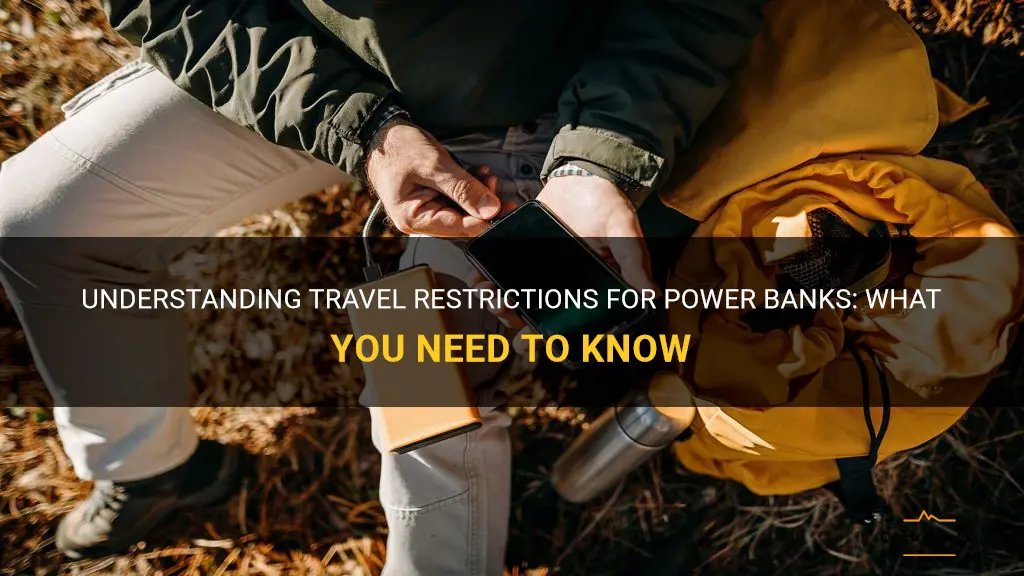
In our technology-driven world, power banks have become a necessary accessory for our portable devices. Whether we are on a long-haul flight or exploring a new city, power banks ensure that our phones, tablets, and other gadgets stay charged. However, with the increasing concern over safety and security, power bank travel restrictions have become a topic of conversation. Airlines and airports have implemented various rules and regulations regarding the use and transport of power banks, and it is essential for travelers to be aware of these restrictions to avoid any inconveniences or surprises during their journeys. From size and capacity limitations to specific rules regarding carry-on and checked baggage, these power bank travel restrictions aim to strike a balance between technological convenience and passenger safety. So, before you embark on your next adventure, make sure to familiarize yourself with the power bank regulations in place to ensure a smooth and hassle-free travel experience.
What You'll Learn
Are there any specific power bank travel restrictions imposed by airlines or airports, what is the maximum capacity allowed for power banks during air travel, are there any regulations regarding carrying power banks in checked luggage versus carry-on luggage, are there any limitations on the number of power banks that can be brought on a flight, are there any countries with specific power bank restrictions that travelers should be aware of.

In this modern age, power banks have become an essential travel accessory for many people. These portable chargers provide a convenient way to keep our electronic devices powered up while on the go. However, when it comes to traveling by air, there are certain restrictions and regulations imposed by airlines and airports regarding the use and transport of power banks.
The International Air Transport Association (IATA) has set guidelines for the transportation of lithium-ion batteries, which most power banks are equipped with. According to these guidelines, power banks are considered portable electronic devices and are subject to certain restrictions.
Firstly, there are limitations on the capacity of power banks that can be carried on board an aircraft. Typically, the maximum allowed capacity is 100Wh (watt-hours). This means that power banks with capacities exceeding this limit are not allowed on the aircraft cabin and must be placed in checked baggage instead. It is important to check the capacity of your power bank before traveling to ensure compliance with these regulations.
Additionally, there are restrictions on the quantity of power banks that can be carried. Typically, airlines allow passengers to carry a reasonable amount of power banks for personal use. However, if you plan on carrying a large number of power banks, it is advisable to check with the airline beforehand to avoid any issues at the security checkpoint.
When it comes to the transportation of power banks, they must be carried in carry-on baggage and cannot be placed in checked baggage. This is due to the potential risk of fire that lithium-ion batteries can pose when not properly handled. It is important to keep the power bank in a protective case and ensure the terminals are protected to prevent accidental activation or short-circuiting.
At the security checkpoint, power banks must be removed from your bag and placed in a separate bin to be screened separately. This allows the security personnel to have a clear view of the power bank and ensures a smooth and efficient screening process. It is recommended to inform the security personnel if you are carrying a power bank to avoid any confusion or delays.
It is worth noting that these regulations may vary between airlines and countries. Some airlines may have stricter guidelines regarding the transport of power banks, while others may have more lenient policies. It is always a good idea to check the airline's website or contact their customer service for the most up-to-date information regarding power bank travel restrictions.
In conclusion, there are specific power bank travel restrictions imposed by airlines and airports to ensure the safety of passengers and crew. These restrictions include limitations on capacity, restrictions on the quantity of power banks, and guidelines on how to transport and screen power banks at security checkpoints. By following these regulations, you can ensure a hassle-free and safe travel experience with your power bank.
Exploring the Current Travel Restrictions in Idaho: What You Need to Know
You may want to see also
Power banks have become an essential accessory for travelers, allowing them to charge their electronic devices on the go. However, when it comes to air travel, there are certain restrictions on the maximum capacity allowed for power banks for safety reasons. In this article, we will explore these restrictions and provide guidelines for traveling with power banks.
The International Civil Aviation Organization (ICAO) and the International Air Transport Association (IATA) have set guidelines for the transportation of Lithium-ion batteries, which includes power banks. Lithium-ion batteries are known for their high energy density, which makes them prone to fire hazards if mishandled or damaged.
According to these guidelines, power banks with a capacity of up to 100 watt-hours (Wh) can be taken in carry-on luggage without any special permission. However, if the capacity exceeds 100Wh but does not exceed 160Wh, prior approval from the airline is required. Power banks with a capacity exceeding 160Wh are strictly prohibited from both carry-on and checked-in luggage.
To calculate the watt-hours of your power bank, multiply its voltage (V) by its ampere-hours (Ah). For example, a power bank with a voltage of 3.7V and an ampere-hour of 20, would have a capacity of 74Wh (3.7V x 20Ah = 74Wh), which falls within the permissible limit.
It is important to note that these regulations may vary slightly between different airlines and countries. Therefore, it is advisable to check with the airline you are traveling with to ensure compliance with their specific rules. Some airlines may have stricter regulations in place due to safety concerns.
When traveling with power banks, there are a few precautions that you should follow to ensure the safety of yourself and others. It is recommended to protect the terminals of your power bank by covering them with insulating tape or placing them in a protective case to prevent accidental short-circuits. Avoid exposing your power bank to extreme temperatures or physical damage, as this can increase the risk of fire.
Additionally, it is always a good idea to carry your power banks in your carry-on luggage rather than checking them in. This allows you to keep an eye on them and reduces the risk of them being mishandled or damaged during the baggage handling process.
In conclusion, the maximum capacity allowed for power banks during air travel is 160 watt-hours. Power banks with a capacity of up to 100Wh can be taken in carry-on luggage without any special permission, while those exceeding 100Wh but not exceeding 160Wh require prior approval from the airline. It is important to follow these guidelines and take necessary precautions to ensure the safe transportation of power banks during air travel.
Will the CDC Change Travel Restrictions in Light of New Variants?
Power banks have become an essential gadget for many travelers today. They provide a convenient way to keep our devices charged while on the go. However, when it comes to traveling by air, there are certain regulations that you need to be aware of regarding carrying power banks in your luggage.
Firstly, it is important to understand the difference between checked luggage and carry-on luggage. Checked luggage refers to the bags that you hand over to the airline staff at the check-in counter, which then gets stored in the aircraft's cargo hold. On the other hand, carry-on luggage refers to the bags that you personally carry with you onto the aircraft and store in the overhead bins or under the seat in front of you.
The International Air Transport Association (IATA), which represents the global airline industry, has set certain guidelines for the transportation of power banks. According to their regulations, power banks with a capacity of less than 100Wh (Watt-hour) are generally allowed in both checked and carry-on luggage. However, there are specific rules that must be followed:
- Power banks in checked luggage: Power banks with a capacity between 100Wh and 160Wh can be carried in your checked luggage, but they must be declared to the airline during the check-in process. Additionally, power banks exceeding 160Wh are not allowed in checked luggage at all.
- Power banks in carry-on luggage: Power banks with a capacity of less than 100Wh are allowed in your carry-on luggage without any restrictions. However, power banks with a capacity between 100Wh and 160Wh are also allowed in carry-on luggage, but they must be declared to the airline staff at the security checkpoint.
It is important to note that these regulations can vary slightly depending on the airline and the country you are traveling to. Therefore, it is always recommended to check with the airline beforehand to ensure compliance with their specific rules and regulations.
To avoid any potential problems or delays at the airport, it is advisable to carry power banks in your carry-on luggage rather than in your checked luggage. This way, you have full control over the safety and usage of the power bank during your journey. Additionally, keeping power banks in your carry-on luggage ensures that they are easily accessible and can be used to charge your devices during the flight.
In conclusion, there are regulations regarding carrying power banks in checked luggage versus carry-on luggage. The IATA has set guidelines based on the capacity of the power bank, and it is important to declare them to the airline if required. To ensure a smooth travel experience, it is best to carry power banks in your carry-on luggage and follow the specific rules of the airline you are traveling with.
Exploring the Latest Caribbean Travel Restrictions: What to Know Before You Go
When it comes to traveling with electronic devices, such as power banks, it is important to be aware of any limitations and regulations set by airlines. Many travelers rely on power banks to keep their devices charged on long flights, but is there a limit on the number of power banks that can be brought on a flight? Let's find out.
The number of power banks that can be brought on a flight largely depends on the airline and its regulations. In general, most airlines allow passengers to bring a reasonable number of power banks for personal use. However, it is essential to check the specific regulations of the airline you are flying with, as they may have their own restrictions.
To understand the limitations, it is crucial to be familiar with the regulations surrounding lithium-ion batteries, which are commonly found in power banks. Lithium-ion batteries are considered potentially hazardous materials due to their risk of catching fire or exploding under certain conditions. Therefore, airlines have put in place safety measures to mitigate these risks.
The International Civil Aviation Organization (ICAO) and the International Air Transport Association (IATA) have established guidelines for the safe transportation of lithium-ion batteries. These guidelines typically restrict the size and capacity of lithium-ion batteries that can be brought on a flight. For most airlines, power banks with a capacity exceeding 100 watt-hours or 20,000 milliamp-hours are not allowed on board.
Furthermore, the ICAO and IATA guidelines also include restrictions on the number of spare lithium-ion batteries that can be brought on a flight. Some airlines allow passengers to carry spare lithium-ion batteries as long as they are properly packaged and not exceeding a certain watt-hour rating. However, the total number of spare batteries is usually limited to a maximum of two or three.
It is crucial to note that different airlines may have varying interpretations and implementation of these guidelines. Therefore, it is essential to check with the specific airline you are flying with for their policies on power banks and spare batteries.
To ensure a smooth experience, it is recommended to follow these steps when traveling with power banks:
- Check the capacity of your power bank: Make sure your power bank's capacity does not exceed the airline's limit, typically 100 watt-hours or 20,000 milliamp-hours.
- Pack your power banks in carry-on luggage: It is generally advised to carry your power banks in your carry-on luggage rather than checked baggage. This is because lithium-ion batteries are prohibited in the cargo hold due to the higher risk of fire.
- Keep power banks properly packaged: Ensure that your power banks are properly packaged to prevent any accidental activation or short-circuiting. This may include using individual protective cases or covering the battery terminals with tape.
- Declare your power banks at security checkpoints: When going through security checkpoints, it is important to declare your power banks. This allows the security personnel to inspect them properly and ensures compliance with airline regulations.
By following these steps and staying informed about airline regulations, you can travel with your power banks safely and without any issues. Remember to always check with your airline for their specific policies before traveling to avoid any surprises at the airport.
In summary, there are limitations on the number of power banks that can be brought on a flight, and these limitations vary depending on the airline. It is essential to check the regulations of the airline you are flying with, and to comply with the ICAO and IATA guidelines for the safe transportation of lithium-ion batteries. By following these guidelines and being aware of the restrictions, you can enjoy a hassle-free travel experience with your power banks.
Exploring Europe's Restrictions on Travel Amidst the Pandemic
With more and more people relying on electronic devices during their travels, it's no surprise that power banks have become a popular accessory for many travelers. These portable chargers allow you to keep your devices charged on the go, ensuring that you never run out of battery power when you need it most. However, while power banks offer convenience and peace of mind, there are some countries that have specific restrictions on their use. As a traveler, it's important to be aware of these restrictions to avoid any potential issues.
One of the countries with specific power bank restrictions is Australia. In Australia, passengers are limited to carrying power banks with a maximum capacity of 100Wh (watt-hours) on flights. This restriction applies to both carry-on and checked baggage. If your power bank exceeds this limit, you will not be allowed to bring it on the plane. It's also worth noting that power banks must be securely protected to prevent accidental activation or short circuiting during the flight.
Another country with power bank restrictions is Japan. In Japan, power banks with a capacity exceeding 160Wh are prohibited from both carry-on and checked baggage on flights. This restriction is in place to ensure the safety of passengers and prevent any potential fire hazards that may arise from high-capacity power banks. It's important to check the capacity of your power bank before traveling to Japan to avoid any issues at the airport.
In the United Arab Emirates (UAE), power banks with a capacity exceeding 27,000mAh are also prohibited on flights. This restriction applies to both carry-on and checked baggage. The UAE has put this restriction in place to prevent potential fire hazards and ensure the safety of passengers.
It's important to note that power bank restrictions can vary from country to country, so it's always a good idea to check the specific regulations of your destination before traveling. This can usually be done by visiting the official website of the country's civil aviation authority or checking with your airline.
To avoid any potential issues with power bank restrictions, it's a good idea to consider purchasing power banks with lower capacities that comply with the regulations of most countries. Power banks with a capacity of 20,000mAh or below are generally allowed on flights worldwide. Additionally, always ensure that your power bank is in good condition and does not show any signs of damage or leakage.
In conclusion, while power banks are a convenient accessory for travelers, it's important to be aware of any specific restrictions that may be in place in the country you are visiting. Australia, Japan, and the UAE are just a few examples of countries with power bank restrictions. By checking the regulations of your destination and choosing a power bank that meets the capacity requirements, you can ensure a smooth and hassle-free travel experience.
The Impact of HIV Travel Restrictions in Malaysia on Public Health and Human Rights
Frequently asked questions.
Yes, you can bring a power bank on a plane. However, there are certain restrictions that you need to be aware of.
The restrictions for bringing a power bank on a plane vary depending on the airline and the country you are traveling to. Generally, lithium-ion power banks with a capacity of less than 100 watt-hours (Wh) are allowed in carry-on baggage and checked baggage. However, power banks with a capacity between 100 Wh and 160 Wh are usually only allowed in carry-on baggage, and power banks with a capacity exceeding 160 Wh are typically not allowed on planes. It's important to check with your airline and the country's regulations before traveling to ensure compliance with their specific requirements.
In addition to the capacity restrictions, there may be other travel restrictions for power banks depending on the airline and country. Some airlines may require power banks to be individually protected from short circuits by insulating the terminals or storing them in separate bags. There may also be restrictions on the number of power banks you can bring. Again, it's important to check with your airline and the country's regulations for any additional restrictions.
When packing your power bank for travel, it's recommended to place it in your carry-on luggage. Keep it turned off and protect the terminals from contact with metal objects, as this can cause a short circuit. If possible, pack it in a separate bag or organizer for easy access during security checks. Remember to also bring any necessary cables and chargers for your devices.

- Cagri Burak Author Reviewer Traveller

- Julia May Author Editor Reviewer Traveller
It is awesome. Thank you for your feedback!
We are sorry. Plesae let us know what went wrong?
We will update our content. Thank you for your feedback!
Leave a comment
United states photos, related posts.

Navigating California's Lockdown Travel Restrictions: What You Need to Know
- Aug 16, 2023

11 Fun Things to Do in Highland Park
- May 07, 2023

13 Fun Activities to Enjoy in Maryville TN This Weekend

Exploring the Natural Beauty: Top Things to Do in Sugarloaf, CA
- Jul 04, 2023

13 Fun Things to Do with Teens in Boston

The Ultimate Packing Guide for a 4-Day Trip to Cancun
- Dec 12, 2023

Is It Safe To Take Power Banks on a Flight?
T raveling by air often involves long hours, and our reliance on electronic devices has made power banks essential companions. But is it safe to carry them on flights?
Let’s explore the guidelines and considerations to ensure a smooth journey without compromising safety.
Power banks use lithium-ion batteries, which are commonly found in smartphones, tablets, and other portable devices. The key points to remember are:
- Carry-On Luggage : All battery packs, including power banks, must be packed in carry-on baggage . They are not allowed in checked luggage due to safety concerns.
- Capacity Limit : The maximum capacity of a power bank allowed on a flight is 100 watt-hours (Wh) per battery. Airlines may permit larger spare batteries (up to 160 Wh) with prior approval.
Why the Restrictions?
The restrictions stem from safety considerations:
- Fire Hazard : Lithium-ion batteries can pose a fire risk if damaged or short-circuited. In-flight fires are particularly dangerous, especially in cargo compartments where they are hard to detect and control.
- Emergency Landings : Instances of power banks malfunctioning or exploding during flights have led to emergency landings. To prevent such incidents, airlines enforce strict guidelines.
Power banks, while essential for staying connected during flights, can pose risks. Here’s why:
- Fire Risk : Lithium-ion batteries are susceptible to overheating and combustion. A malfunctioning power bank could lead to an in-flight fire, endangering passengers and crew.
- Emergency Situations : If a power bank malfunctions mid-flight, the consequences can be severe. Emergency landings disrupt schedules, inconvenience passengers, and may even jeopardize safety.
Best Practices
- Keep It Handy : During the flight, keep your power bank within reach. You may need it if your devices run low on battery.
- Avoid Disturbing Others : Frequent trips to retrieve your power bank can inconvenience fellow passengers. Plan ahead to minimize disruptions.
While power banks are essential for staying connected during flights, adhering to safety guidelines ensures a trouble-free journey. Remember to pack them in your carry-on luggage, stay within the capacity limits, and enjoy your inflight entertainment without worry.
Safe travels!
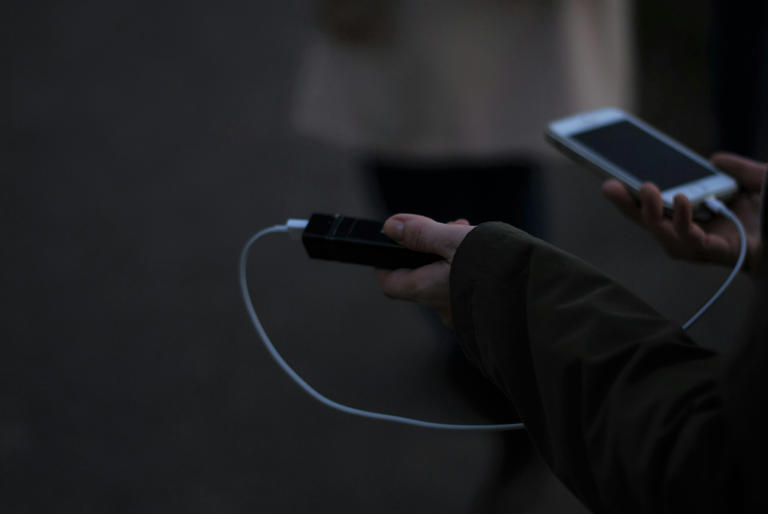

POWER BANK TRAVEL RESTRICTIONS: FLYING WITH YOUR PORTABLE CHARGER
These days, it is not unusual for travelers to have power-hungry mobile devices in tow. Whether it is a mobile phone, travel camera, tablet, laptop or some other mobile device, there is definitely a battery that needs to be recharged. Imagine the frustration of not having a portable charger with you during your trip. Here are some power bank travel restrictions to keep in mind so you can always fly with one:
This post contains affiliate links.
READ MORE: 10 REASONS WHY YOU NEED OFFLINE APPS FOR TRAVEL
POWER BANK TRAVEL RESTRICTIONS – CARRYING A POWER BANK DURING FLIGHT
Yes! You can now take a power bank with you aboard a plane – provided you carry it with your luggage into the cabin. Power banks cannot be checked in along with your luggage. It is no secret that batteries have that tendency to react chemically during a flight and when they do, they can be promptly managed when they are in the cabin versus in the cargo hold.
READ MORE: CELL PHONE INTERNATIONAL TRAVEL – USE YOUR PHONE EVEN WITHOUT NETWORK
POWER BANK TRAVEL RESTRICTIONS – CAPACITY
Avoid carrying a power bank that is enough to energize an entire neighborhood. If you do not want to go through the hassle of obtaining airline approval to take your portable charger on flight, make sure that you are bringing one with a capacity of no more than 100Wh. A power source above this capacity but less than 160Wh will require you to obtain approval from the airline that you can take it aboard the plane. Anything more than 160Wh cannot be hand-carried.
How to Calculate Power Bank Capacity
Perhaps your primary concern is the capacity of your power bank being indicated in mAh instead of Wh. If your portable power source does not indicate capacity in terms of Wh, you can compute it using the following formula: (mAh/1000) x voltage = Wh.
Nowadays, the large majority of power bank manufacturers display the capacity of the battery in mAh.
The large majority of airlines accept battery packs that have a maximum of 27000 mAh as a carry-on.
This means that you can carry a power bank that has a maximum capacity of 27000 mAh and 100 Wh as a carry-on on the large majority of commercial airlines. Also, most airlines accept a maximum of 2 of these batteries per traveler.
WHAT MODELS DO WE SUGGEST?
For all the reasons listed above, in our opinion, the best power banks need these exact specifications: 27000 mAh, 100 Wh and a minimum of 100W PD of output. This last requirement (100W PD) will allow you to charge a compatible laptop.
The Zendure SuperTank fits all of these requirements and is quite compact. On top of that, it’s super rugged. Perfect for the road.

Other good options include the Anker 737 Power Bank and the EASYLONGER Laptop Power Bank .
However if you don’t plan on using your power bank to recharge a laptop, a 45W output is sufficient since it is the maximum input that modern smartphones can receive. In fact, even the most recent iPhones can’t take anything above 27W of input!
This means that the Anker PowerCore+ is what you need. Remember that, with power banks, you usually get what you pay for!

READ MORE: MOBILE TRAVEL CHARGER POWER BANK: BUYING GUIDE

The Most Bizarre Modes of Transportation in the World

Spatenhaus, Munich beer hall: Beer and pork and beer and pork and…

Anthony Bourdain Lisbon : All Of The Restaurants Picked On No Reservations

Cuba: Things to do Outside Varadero Resorts
- [do_widget_area builder-41047]
- [do_widget_area footer-1]
- [do_widget_area footer-2]
- [do_widget_area footer-3]
- [do_widget_area footer-mob]
- [do_widget_area mob-slide-menu]
- [do_widget_area sidebar-default]
- [do_widget_area slide-menu]
- [do_widget_area timed-popup]
- [do_widget id="custom_html-2"]
- [do_widget id="tbnwidget-3b63a912-2127-4f51-a91d-1183fb96c5bf"]
- [do_widget id="tbnwidget-13987752-c081-4181-8705-66e0aa39cb17"]
- [do_widget id="tbnwidget-89eab4d8-9768-4384-a65c-f2a8da4c2abd"]
- [do_widget id="tbnwidget-9da9fd42-8b81-4db1-9fea-0d57a5f763cc"]
- [do_widget id="tbnwidget-6488ca25-9916-4631-8898-5e5ef085ab41"]
- [do_widget id="tbnwidget-24f8b705-4a39-4d68-ae15-d21d5b4e896f"]
- [do_widget id="tbnwidget-7ba2cef8-cc90-4635-ae30-28855efb6598"]
- [do_widget id="zeen_stylish_posts-2"]
- [do_widget id="zeen_social_icons-2"]
- [do_widget id="text-19"]
- [do_widget id="search-2"]
- [do_widget id="search-3"]
- [do_widget id="text-3"]
- [do_widget id="text-4"]
- [do_widget id="text-11"]
- [do_widget id="text-14"]
- [do_widget id="text-15"]
- [do_widget id="text-16"]
- [do_widget id="text-17"]
- [do_widget id="nav_menu-4"]
- [do_widget id="newsletterwidget-2"]
- [do_widget id="newsletterwidget-3"]
- [do_widget id="calendar-3"]
- [do_widget id="calendar-4"]
- [do_widget id="text-18"]
- [do_widget id="nav_menu-5"]
Privacy Overview
Enable JavaScript
Please enable JavaScript to fully experience this site. How to enable JavaScript
- At the airport
Restricted items
What can you fly with.
To prevent inflight danger, many common items are restricted by the Transportation Security Administration (TSA) and Federal Aviation Administration (FAA). If you travel with objects on the TSA prohibited items or FAA Pack Safe Hazmat restrictions lists, they will be confiscated.*
- TSA prohibited items Opens another site in a new window that may not meet accessibility guidelines
- FAA Pack Safe Hazmat restrictions Opens another site in a new window that may not meet accessibility guidelines
*You will be in violation of U.S. Federal Law if you don’t declare any dangerous items. This means you could face up to 5 years imprisonment and a fine of $250,000 (49 U.S.C 5124).
Alcoholic beverages over 140 proof
Allowed for travel?
- Other alcoholic beverages in retail packaging
- Checked bags - yes
Visit the TSA for rules on carry-on bags Opens another site in a new window that may not meet accessibility guidelines
Opened containers aren't allowed.
You can take a maximum of 5 liters per passenger for beverages 24 – 70 percent alcohol by volume in checked bags; customs regulations vary by country.
Due to restrictions set by the European Union (EU), you cannot transport certain products of animal origin into the EU. Please check ahead of time to make sure you comply with these restrictions.
- Carbon zinc
- Silver oxide
- Lithium or lithium-ion
- Nickel-cadmium or nickel-metal hydride
Please remove batteries from devices in your checked bags and put them in your carry-on in separate plastic bags.
Lithium-ion battery acceptance by Watt-hour (Wh):
- Less than 100 Wh – 4 spares in carry-on bag
- 100 - 160 Wh – 2 spares in carry-on bag
- 160 - 300 Wh – Contact Special Assistance
Special assistance
- Damaged batteries
- Automobile, boat or aircraft batteries
Portable electronic devices containing cells or batteries (including lithium) and spares for these devices intended for personal use:
- Laptop computer
- Notebook computer
We allow up to 2 spare batteries for personal use, with restrictions:
- Each spare battery is individually protected in accordance with our lithium battery acceptance policy
- Batteries are in carry-on bag only
- For a lithium metal battery, lithium content cannot be more than 2 grams per battery
- For lithium-ion batteries, a maximum of 2, not exceeding 160 Wh each, are allowed in carry-on bag with airline approval
Traveling with lithium batteries Opens another site in a new window that may not meet accessibility guidelines
Portable electronic devices containing cells or batteries (including lithium) and spares for these devices not intended for personal use:
We allow up to 2 of each device and 2 spare batteries intended for personal use only, with restrictions:
- Approved devices and batteries are safely packaged in carry-on only
- Bags and boxes carrying more than the allotted amount for personal use will not be accepted
- Metal knives (of any length or type)
- Box cutters
- Straight razors
- Carry-on bag - no
You can travel with plastic cutlery and safety/disposable razors in your carry-on bag.
- Pepper spray
Yes, with restrictions
Your drone's battery must not exceed 160 Wh
Drone can be carried on if it or its box is less than 22 x 14 x 9 inches / 56 x 36 x 23 centimeters
Dry ice for packing perishable items
You can travel with up to 5.5 lbs/2.5 kgs as carry-on if:
- Packed in a vented, hard plastic or heavy gauge styrofoam container
- You tell a ticket or gate agent
- Vapor cigarettes
- e-cigarettes
Checked bags - no
Carry-on bag - yes
Since some electronic cigarettes use lithium ion batteries, you cannot travel with them in your checked bags. You can travel with them in your carry-on, but you’re not allowed to use them onboard any flight. We recommend traveling with them in a designated carry case.
- Flares/flare guns
- Swingless golf club load strips
You can travel with swingless golf clubs without strips.
Checked bags - yes*
You can travel with firearms in checked bags only if they are declared to an agent at check-in.
You can travel with up to 11lbs/5kg small arms ammunition for sporting purposes in your checked bags if it is:
- Securely packed in the original manufacturers' packaging
- Packaged in fiber, wood, metal or other packaging specifically designed to carry small amounts of ammunition
Firearms and ammunition
*Firearms are not allowed in checked bags on Landline motorcoach connections.
- Gas torches (including micro-torches and torch lighters)
- Flammable glues/epoxies
- Gas-powered trimmers/edgers
You can only travel with gasoline-powered tools in your checked bags if they are:
- New or unused
- In the original packaging (which must be in good condition)
- Spray starch
- Insecticides
- Drain cleaners
- Oven or bathroom cleaners
- Hoverboards
- Balance wheels
- Electric small scooters
- Intelligent scooters
We don’t allow lithium ion battery-powered personal transportation devices on board or as carry-on or checked bags.
- Lighters or lighter fluid
- Grill lighters
When traveling to/from/through Japan, you can carry one lighter per person.
For all other travel, you can also carry-on:
- 1 book of safety matches
- Common “Bic style” and unsealed “Zippo style” lighters
You cannot travel with:
- Torch/wind-proof lighters
- “Strike-anywhere” matches
- Lighter fluid
- Recreational Marijuana
- Medical Marijuana
Although American is aware of various state laws that allow recreational or medical marijuana possession, the TSA has stated that possession of marijuana, even medical marijuana, is illegal under federal law and that it will refer passengers traveling with marijuana to law enforcement authorities. Accordingly, American does not allow passenger to transport marijuana on our flights. Anyone traveling with or transporting marijuana on American flights does at their own risk.
Electric wheelchairs with spillable batteries
You can travel with mobility devices if:
- Transported according to our guidelines
- Advance notice is given when traveling transatlantic
Mobility and devices
- Aerosol deodorant or hair spray
- Insect repellent
- Perfume or cologne containing alcohol
- Nail polish or nail polish remover
- Large bottles of acetone such as liquid nails
You can travel with personal care items in your carry-on bag if they are:
- Travel-size (3.4 ounce containers or smaller)
- In a clear, plastic, one-quart zip-top bag
You can travel with personal care items in your checked bags if:
- You have no more than 70 ounces in total
- Each container has no more than 16 fluid ounces
Carry-on bags
- Propane tanks
- CO2 cartridges
- Self-inflating rafts
- Recreational oxygen
- Personal face / full-body pod
- Personal face / full-body tent
- Stadium tent
Checked bags – yes
Carry-on bag – yes
You can travel with these items in your bag, but they may not be used on board or in flight. If space is limited and the item doesn’t fit in the cabin, it may need to be checked.
- Portable electronic air freshener / purifier
- Ozone generator
Checked bags – no
Since some devices use lithium ion batteries, you cannot travel with them in your checked bags. You can travel with them in your carry-on, but you’re not allowed to use them on board any flight.
Traveling with lithium batteries Opens in a new window
Samsung Galaxy Note 7 devices
Includes recalled and replacement devices.
- Flameless meal products such as HeaterMeals
- Meals Ready-To-Eat (MREs)
Self-inflating life jackets with no more than 2 small CO2 cartridges for inflation purposes
You can only travel with one life jacket in your checked bag, but it may be confiscated by the TSA.
- Metal scissors
- Screwdrivers
Yes but with restrictions
You can travel with such items as carry-on if their measurements are:
- Cutting edge of up to 4-inches : metal scissors
- Up to 7-inches : tools such as screwdrivers, wrenches and pliers
Checked or carry-on bags with charging devices
Allowed to travel?
You can travel with these bags as a carry-on if the battery is removable. If the bag needs to be checked or valeted you must remove the battery and carry it with you. Bags with non-removable batteries won't be accepted.
- TASER devices
- Electro-shock weapons (conducted electrical weapons)
You can travel with stun guns / shocking devices in checked bags only if transported in a manner that renders the device inoperable from accidental discharge.
Please remove all batteries from devices in your checked bags and put them in your carry-on in separate plastic bags.
- Less than 100 Wh – 4 spares in carry-on bag
- 100 - 160 Wh – 2 spares in carry-on bag
- 160 - 300 Wh – Contact Special Assistance
Flying on a partner airline?
Find helpful information if your trip includes 1 or more flights with our partner airlines.
- British Airways
- Japan Airlines
- Qatar Airways
You may also like...
- Special items and sports equipment
- Oversize and overweight bags
- Search Please fill out this field.
- Manage Your Subscription
- Give a Gift Subscription
- Sweepstakes
- Travel Products
- Tech Essentials
The 14 Best Portable Chargers of 2024
We appreciate a good balance of speed and power while on the go.
:max_bytes(150000):strip_icc():format(webp)/Lauren-Breedlove-2000-8fc62921334e4fe5a26bc333e9ea4b1b.jpg)
In This Article
Jump to a Section
- Our top picks
- Tips for Buying
- Why Trust T+L
We independently evaluate all recommended products and services. If you click on links we provide, we may receive compensation. Learn more .
Travel + Leisure / Marcus Millan
There’s nothing worse than grabbing your phone or laptop while traveling and realizing your battery is completely drained. A portable charger is one of the most useful travel items, especially when you find yourself in a tricky situation with no access to an outlet. Whether you’re exploring in a campervan and need a hefty charger to handle your laptop, or boarding a plane and in need of something super compact to charge your smartphone, there’s a portable charger for all types of travelers’ needs so you don’t find yourself in a powerless pickle.
With so many choices on the market, we’ve narrowed down your search by prioritizing features like weight and size for portability, functionality, power, and battery capacity. These are the 14 best portable chargers of 2024 to make sure you stay connected wherever you go.
Best Overall
Nimble champ portable charger.
It’s lightweight and pocket-sized.
If you need more capacity, consider upgrading to the Pro version which provides 20,000 mAh.
The Nimble Champ is “smaller than a deck of cards” and incredibly lightweight, making it an ideal travel companion. This tiny but mighty backup charger comes in a spectrum of colors, allowing you to match it to your personality. It’s also extremely functional, with the ability to charge two devices at once and compatibility with a wide array of phones, tablets, Apple MacBooks, and fitness trackers. The dual USB-C power delivery offers high-speed charging to almost any device and the capacity to charge most smartphones up to three times. In fact, with this charger, you can get your smartphone back up to an 80 percent charge in just half an hour. The included lanyard makes it easy to tote around, whether on your wrist or attached to your bag. We also love that it’s crafted out of 90 percent certified recycled plastics with a free e-waste recycling option for your old, unused devices.
The Details: 3.38 x 2.28 x 0.98 inches | 6.2 ounces | 10,000 mAh | 1 USB-C, 1 USB-A
Best With Built-in Cords
Charmast portable charger.
It can charge up to six devices at the same time.
The attached cords are short.
The slim and travel-friendly Portable Charger with Built-in Cables on Amazon is our top choice for those who need a variety of included cords for multiple devices. With six outputs and three inputs, this charging device is ideal for people with an array of different types of electronics, from smartphones to tablets, and micro devices. Its lightweight and slim profile make it easy to throw in your bag without taking up too much space. Each included cable can be tucked into the back of the device, keeping things organized so you don’t have to spend time untangling a mess of wires. Check the digital display screen to keep track of how much battery is left on your backup charger so you can plan appropriately (and it will take between four and a half to six hours to fully recharge). When at full capacity, this backup charger can power up your smartphone twice, your tablet up to 1.5 times, and much more.
The Details: 5.71 x 2.68 x 0.51 inches | 0.63 ounces | 10,000 mAh | USB-C, Micro USB, built-in charging USB-A cable (input); 2 USB-A and 1 USB-C and built-in Micro USB, USB-C, and Lightning cables (output)
Most Compact
Tntor portable charger for iphone.
It has a built-in lightning cable for charging iPhones.
Phones with USB-C ports (like Androids and newer iPhones) will need to supply their own C to C cable to charge.
The ultra slim Tntor Portable Charger for iPhone wins the award for “most compact” with a 6-millimeter thickness and credit card size. Specifically designed for iPhone users, the built-in cord means it’s ready to charge and you don’t have to tote around a separate cord. At 5,000 mAh, this charger is carry-on compatible and can charge not just your iPhone, but other lightning-equipped devices including an iPad, iPad mini, and AirPods. This is an ideal charger for those who don’t need to charge multiple devices and only need to top off their iPhone en route to their next destination. It offers one full charge when at 100 percent capacity and requires a three-hour charging time. The Intelligent Control Circuit feature protects your devices from overcharging, as well as other problematic issues such as over-voltage, short circuiting, temperature protection, and over-current.
The Details: 4.84 x 2.6 x .24 inches | 4 ounces | 5,000 mAh | USB-C (input); built-in Lightning cable (output)
Best Wireless
Podoru wireless portable charger.
Paired with a magnetic case, it can charge right on the back of your phone without a cord.
It will only work with a magnetic case (purchased separately) and is compatible with iPhone 12 series and higher.
Indulge in the luxury of leaving your cords behind with the Podoru Wireless Portable Charger that can power up to three devices with its magnetic charging capability. Compact with an impressive capacity to recharge your phone up to two and a half times, it’s an ideal option for travelers or those on the go for long stretches of time. The LED display shows how much battery is left in your charger — and, if you need to top off other devices in addition to your phone, two extra input and output ports allow you to do so. There are eight built-in low temperature ice cores and a protective safety system not just for temperature control, but also short circuit and overcharging protection as well. Thanks to its silicone shell, it’s easy to grip and with a soft exterior that won’t scrape your device when connected magnetically.
The Details: 5.67 x 3.43 x 0.94 inches | 6.5 ounces | 10,000 mAh | USB-A (output); USB-C (input/output)
Best With Stand
Aoguerbe magnetic power bank.
The stand is foldable and compact.
It’s a little bulkier than other models we’ve seen.
We love the folding stand that’s built into the design of the Aoguerbe Magnetic Power Bank. It allows you to charge your iPhone without the hassle of a bunch of cords when paired with a magnetic phone case. Charge up to three devices at a time, with the capacity to bring your iPhone to 100 percent up to two times per fully charged power bank. The included stand folds down to keep the compact profile of the power bank and can be used to keep your phone upright in either a vertical or horizontal orientation. The charger also won’t block your camera lens, so you can easily continue to use your phone while it’s being charged. Built-in temperature control and other safety protection helps ensure this device won’t damage your phone or overheat.
The Details: 4.09 x 2.68 x 0.86 inches | 6.7 ounces | 10,000 mAh | USB-C and Lighting (input); USB-C and USB-A (output)
Best for Tablets
Eggtronic laptop power bank.
It can charge your tablet up to four times.
Due to its powerful capacity, it’s larger and heavier than comparable power bank models.
We love the powerhouse Eggtronic Laptop Power Bank for so many reasons: it has the capacity to charge multiple devices twice as fast as standard models, and boasts a relatively compact size and sleek design. This universally compatible power bank can refuel the battery on not just your smartphone or tablet, but also laptops, cameras, bluetooth devices, and more. The LCD display shows the current battery life so you can stay up to date on its capacity. This durable device is a great travel companion for anyone; from professionals that need to stay in touch on the road, to those exploring the great outdoors on a multi-day camping trip. When it’s time to recharge the power bank itself, it’ll only take about three hours which is impressive for such a powerful device.
The Details: 6.75 x 4 x 0.63 inches | 1.34 lbs | 20,000 mAh | 2 USB-A (output); USB-C (input/output)
Best for Laptops
Anker 747 power bank.
It can fully charge an entire MacBook Air.
It’s rather heavy — and expensive — if not using it to charge laptops often.
For travelers who are working en route to their destination and need to keep their laptop consistently charged, the Anker 747 Power Bank is our top choice. Compatible with a wide range of brands including Dell and Apple, this power bank can refuel computer batteries in anywhere from two to three hours. Charge up to four devices at once, and enjoy the long-lasting capacity that can power an iPhone 13 Pro up to five times before needing to be charged itself. Paired with the included Anker 65W 515 wall charger, this power bank can reach 100 percent in two and a half hours versus more than 17 hours without. Built-in sensors offer advanced temperature control to make sure the device doesn’t overheat while the battery management system prevents overcharging.
The Details: 7.2 x 3.23 x 0.95 in | 1.34 pounds | 25,600 mAh | 2 USB-C, 2 USB-A
Best Multi-device Charging
Anker prime 27,650mah power bank.
It charges three devices at once.
This charger is over the mAh limit for traveling on some airplanes, so it’s best to check with the airline before bringing it with you on board.
For those who need a power bank that can charge multiple devices (and fast), the Anker Prime 27,650 mAH Power Bank is a fantastic choice. While not necessary to use, the accompanying app shows you up-to-date stats, and can also help to locate your power bank with sound alerts should you misplace it. This exceptionally functional power bank can recharge a smartphone more than four times and a MacBook Air more than once before needing to be reloaded. Using the dual USB-C ports, the power bank itself can be recharged in less than 40 minutes. As a bonus, this soda-can-sized charging bank comes with its own travel pouch. The built-in active shield prevents the charger from overheating and other safety issues.
The Details: 6.37 x 1.96 x 2.24 inches | 1.47 lbs | 27,650 mAh | USB-C, Lightning (input); USB-C, USB-A (output)
Best Fast Charging
Ugreen 145w power bank.
It can charge a MacBook Air in 90 minutes.
While compact, it’s a bit heavier than other models.
Not only does the Ugreen 145W Power Bank charge devices quickly, but it also can be charged back to 100 percent in under two hours using the two-way fast charging. This requires an additional purchase of a 65W charger . Because it has 145 watts in output, it can recharge a laptop more than once and a smartphone more than five times all at a rapid speed. The smart digital display keeps you in the loop with how much battery is left in the power bank. It’s also compatible with so many devices, from smartphones to drones, that you won’t be limited with what you can charge as you travel. With three ports, you can charge a few devices at a time as well.
The Details: 6.3 x 3.18 x 1.05 inches | 1.11 lbs | 25,000 mAh | 1 USB-C, 1 USB-A (output); 1 USB-C (input/output)
Best LED Display
Vnbbt magnetic wireless power bank.
The display shows both the available charge left on the device and the progress of the item it’s charging.
It’s not compatible with non-magnetic phone cases.
Take the guesswork out of charging when using the Vnbbt Magnetic Wireless Power Bank, thanks to its incredibly accurate LED display feature. It can be fully charged for your travels within two and a half to four hours. Its ultra compact, lightweight design makes it easy to bring along with you. The material is non-slip so you don’t have to worry about grip being an issue while using the magnetic charger paired with a magnetic phone case. The display is simple, quickly informing you of how much charge is left to go and how much is on the power bank itself so you can plan accordingly. Charge your iPhone in less than 45 minutes and power up two other devices at the same time.
The Details: 7.87 x 3.94 x 0.79 inches | 8.1 ounces | 10,000 mAh | USB-C (input/output), USB-A (output), and magnetic wireless charging
Best for Android
Iwalk small usb c portable charger.
It’s lipstick-sized and very portable.
The battery life isn’t that impressive compared to other power banks.
Specifically designed for Android users, this tiny portable charger easily fits in a bag or even your pocket. The iWalk charger is cordless as well, so you don’t need to provide a cord or untangle wires when you want to use it; simply plug it directly into the USB-C port. Although there isn’t an LED display to show the percentage of battery left, there are indicator lights to track the power level. It’s designed to prevent over-charging, short circuiting, and temperature control while using as well, so you can have peace of mind if you need to step away. In general, it takes approximately two and a half hours to recharge this portable device.
The Details: 3 x 1.8 x 1 inches | 0.071 ounces | 4,500 mAh | USB-C (input), USB-C (output)
Best With A/C Outlet
Sinkeu portable laptop phone charger.
It includes an actual plug as well as a cord for charging via a car cigarette lighter.
There are no slots for a USB-C.
For a power bank with an actual built-in plug, the SinKeu 65 Watt Portable Laptop Phone Charger is our top pick because of its portability and versatility. This power bank is fantastic for charging laptops, tablets, and other compatible devices like certain camera batteries (65 watts and under) that need a typical plug port. The 12V port is great for recharging speakers and other devices that require that output, while the 5V port is perfect for refueling your cell phone up to eight times before needing to be recharged itself. For compatible laptop models, it can provide a full charge twice, making this a great option for travelers with a wide array of devices. The included cigarette lighter plug makes it possible to recharge this power bank in your car as well. To fully recharge, it takes approximately four hours.
The Details: 6.8 x 3.8 x 1.8 inches | 1.1 lbs | 24,000 mAh | 2 USB-A, 110V AC outlet, 15V (input), 12V (output)
Best Colors
Charmast small portable charger.
It’s small and comes in a fun spectrum of colors.
It’s difficult to plug your phone into the charger if you have a case.
We love the colors and size of the Charmast Small Portable Charger that can easily fit in your pocket or purse. This charger has the ability to be fully recharged within an hour and a half when using a 9V-2A fast charger (or three hours with a standard one). Although it doesn’t have the capacity to fully power your smartphone back to 100 percent, it can provide up to 65 percent charge which is a great option for most travelers who just need to top up a device throughout their journey. It can, however, recharge AirPods up to six times. With no additional cords needed, plug it directly into your phone’s lightning port (and it’s also offered with a USB-C instead for Google, Samsung or iPhone 15 devices). With colors like pink, green, blue, orange, black, and white, you can match this portable charger to your phone’s case (or whatever suits your mood!)
The Details: 1.38 x 3.03 x 0.97 inches | 4.7 ounces | 5,000 mAh | USB-C (input), Lightning port (output)
Best With Wall Plug
Brand q ultra slim portable charger.
It’s ultra slim and offers 5-in-1 types of charging.
The built-in cords are stiff and not easy to manipulate.
We love that the built-in wall plug on the Q Slim Portable Charger folds into the power bank to keep a slim profile for transport and that this option comes with its own case. With three included cords, this universal charger is ideal for all types of phones, and you won’t have to bring additional cords along on your adventures. Most phones can be charged between two and a half to four times before needing to recharge the power bank. The included “Intelligent Power Management IC” makes sure your devices will be protected from short circuit, overheating, and overcurrent issues while in use. Another great feature is that you can charge your phone from the power bank while also charging the power bank from the wall plug.
The Details: 6.29 x 2.95 x 0.6 inches | 12.1 ounces | 10,000 mAh | Micro USB, AC (input); Lightning, USB-C, Micro USB (output)
Tips for Buying Portable Chargers
Consider charge potential and timing.
When shopping for a portable power bank, one of the main features to look out for is the capacity for fully charging your devices, especially your smartphone. If you have long travel days with little opportunity to plug your phone in and your backup charger can only offer half a charge to top it off, that may not work for you. Another thing to consider is how long it will take to recharge each of your important devices, as well as the length of time it will take to recharge the power bank itself. Most people can recharge a power bank overnight if it takes more than a couple of hours, but you need to look at your precise needs while on the go.
Decide how much capacity you need
All of the numbers referring to capacity in mAh and watt hours can be a little tricky to understand when deciding what you’ll need. The term mAh means “milliampere-hour” and measures the units of electric charge, or how much power it can hold. This will be the difference between being able to charge just one device at a time versus multiple, and/or charging your phone multiple times or even a laptop at all. If you just need to top off your phone and keep it from getting to zero percent, something below 5,000mAh should do the trick. If you need to charge your phone constantly or have more than one device, something more than 10,000mAh might be for you.
Since the Federal Aviation Administration (FAA) and Transportation Security Administration (TSA) have rules for rechargeable batteries and power banks measured in the max watt hours allowed, you’ll need to know how to convert the mAh listed for the power bank or charger into watt hours to see if your device can come along with you. To do this, you’ll need to multiply milliamp hours by volts then divide by 1,000. So, if you take the Eggtronic Laptop Power Bank listed above, it’s 20,000mAh at 5V, making it equivalent to 100 watt hours.
The FAA and TSA state that any spare battery with more than 100 watt hours or 27,000mAh needs to have approval from the airline.
Look at the types and numbers of ports
One of the most important aspects of choosing a power bank is to make sure it will be compatible with your devices. The last thing you want is to purchase a back-up charger that’s only suitable for an iPhone when you have an Android. There are numerous options that offer more than one type of port. The most common inputs and outputs are USB-A and USB-C, as well as lightning ports (for Apple devices). Some models offer a wall plug or cigarette lighter adapter as well, perfect for those who need to charge a device from the car or have to charge something with a physical plug.
It’s important to note that regulations will have lightning ports outdated for future iPhones due to the European Union’s ruling that all smartphones need to have the USB-C charging port in common.
A portable charger or power bank is a great back-up solution to ensure you don’t run out of battery on your devices such as smartphones, tablets, and laptops. They provide an extra lithium-ion battery-powered source that can connect to a wide array of devices, depending on their ports or magnetic charging capabilities. When connected, they transfer their stored energy to the electronic device plugged in. Typically, they are small enough to fit in your bag without taking up too much space, and some are even compact enough to fit in your pocket.
Yes, it’s possible to bring most portable chargers on an airplane, though there are restrictions to abide by: it’ll have to stay in your carry-on luggage that you’ll have with you in the cabin, as it can’t be in a checked bag. It also can’t possess more than 100Wh (watt-hours) or 27,000 mAh capacity. If your power bank has a larger capacity than this, you’ll need approval from the airline.
Why Trust Travel + Leisure
T+L contributor Lauren Breedlove used her first-hand experience as a travel writer and photographer on-the-go who often needs to keep her devices charged for all of her adventures. She tapped into her knowledge of using different power banks and backup charger brands to curate this list for every need, big and small.
Love a great deal? Sign up for our T+L Recommends newsletter and we’ll send you our favorite travel products each week.
:max_bytes(150000):strip_icc():format(webp)/JasmineGrant-c7aebf391faf4c1c8767a407a955548a.jpg)
6 Best Laptop Power Banks for Travel and Remote Work
If you are a remote worker, a digital nomad, or a frequent traveler, you know how annoying it is to see your laptop dying in the middle of an important last-minute work session. Spoiler: it's not fun .
The panic of finding an outlet, the dread of lost progress, and the frustration of interrupted productivity on the go are feelings we'd all rather avoid.
But with the right power bank by your side, these concerns become a thing of the past.
In this article, we'll explore the best laptop power banks that are perfect for travel and remote work , ensuring you're always ready to tackle any task, anywhere, even if you need to send that last minute email or jump on a quick Zoom call. If that sounds what you are looking for, keep reading.
Can a Portable Power Bank Charge a Laptop?
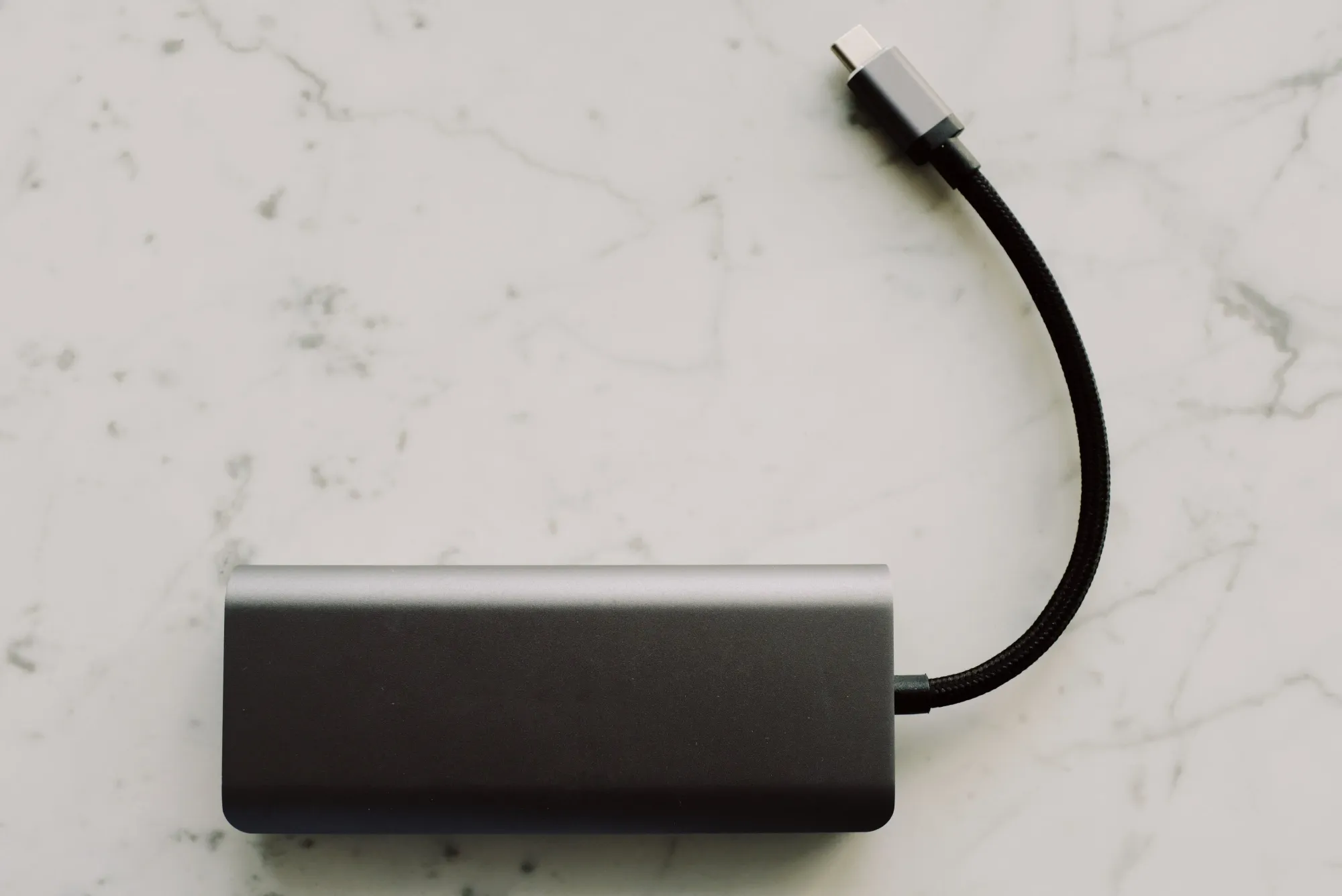
A laptop power bank is a specialized portable charger designed to provide high-capacity power to laptops and other high-consumption devices.
Unlike regular power banks that are primarily meant for smartphones and tablets, laptop power banks come equipped with higher wattage outputs and often multiple ports to cater to the demanding energy needs of laptops.
They are built to handle the larger power requirements and can efficiently charge your laptop on the go , ensuring you're never left with a dead battery during crucial moments. So no more cafè crawling in search of that power outlet!
But which are the best out there? Let's look at them one by one.
The 6 Laptop Power Banks for Travel & Remote Work
When selecting the best power bank for charging your laptop during your travels, we considered a myriad of factors to ensure you get the most bang for your buck. We delved into top-performing brands, took note of personal favorites, and scoured the internet for popular devices that digital nomads rave about via their online reviews.
And while we haven't had the chance to personally test each power bank featured on this list, we meticulously vetted each selection against the most sought-after attributes for a travel power bank.
These criteria include:
- Portability, ensuring it's easy to carry and doesn't weigh down your bag
- Capacity, so you know it'll last through those long work sessions
- Charging speed , because no one wants to wait hours for a full charge
- Ease of use , ensuring a hassle-free experience;
- Design , because aesthetics do matter;
- Durability , to withstand the rigors of travel;
- Price , of course, we want to ensure you get value for money.
So, based on our comprehensive research, here are the best laptop power banks you should be considering:
1. Omni Mobile 25600
The digital nomad's choice.
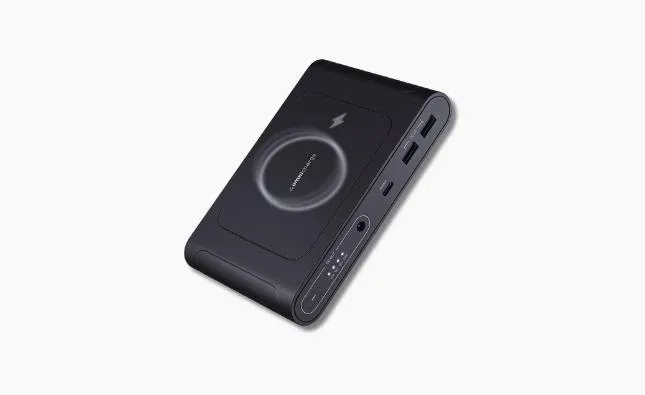
The Omni Mobile 25600 is a laptop power bank designed with the modern digital nomad in mind. Offering a vast power reserve in a compact design, it ensures you're never caught off guard, whether you're in a remote location or a bustling city. Its versatility in charging multiple devices simultaneously makes it an indispensable tool for those of us who are always on the move and handle a lot of tech gear. With the Omni Mobile 25600, the world truly is your (remote) office.
Key Features
- Dimensions: 4.33 x 6.2 x 1 inches (110 x 157.4 x 25.4 mm)
- Weight: 1.23 lbs / 560 g
- Capacity: 25,600 mAh / 92 Wh
- Outputs: 1 x 72W DC port, 1 x 60W USB-C PD port, 2 x 18W USB-A QC 3.0 ports, 1 x 10W wireless charging pad
- Input: 1 x 60W USB-C PD port
- Compatibility: Most laptops, tablets, smartphones and other USB devices
- Wireless Charging: Yes, 10W wireless charging pad on the top
Pros and cons:
Price: $149.99.

2. Goal Zero Sherpa 100PD
The ultimate travel companion.
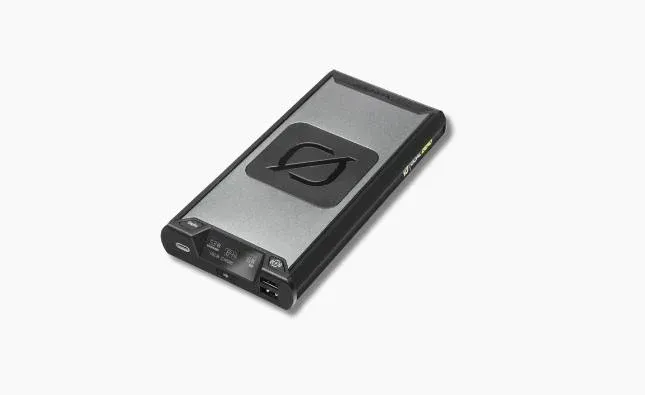
The Goal Zero Sherpa 100PD is a robust and dependable power bank that boasts a sleek design with a matte finish. Its compact size makes it a perfect travel companion, fitting snugly in your backpack or laptop bag. With a whopping 100PD wattage, it ensures your laptop stays powered during those long remote work sessions or while on transit. The inclusion of USB-C Power Delivery means faster charging for compatible devices. While it might be on the pricier side, the Sherpa 100PD's durability and performance make it a top choice for many long-term travelers who live the laptop.
- Dimensions: 7.5 x 3.7 x 1.0 inches (19.05 x 9.4 x 2.54 cm)
- Weight: 1.5 lbs / 680 g
- Capacity: 25,600 mAh / 94 Wh
- Outputs: 1 x 100W USB-C PD port, 2 x 18W USB-A QC 3.0 ports, 1 x 15W wireless charging pad
- Wireless Charging: Yes, 15W wireless charging pad on the front
Price: $199.95
3. mophie powerstation pro ac, uninterrupted power, anytime, anywhere.
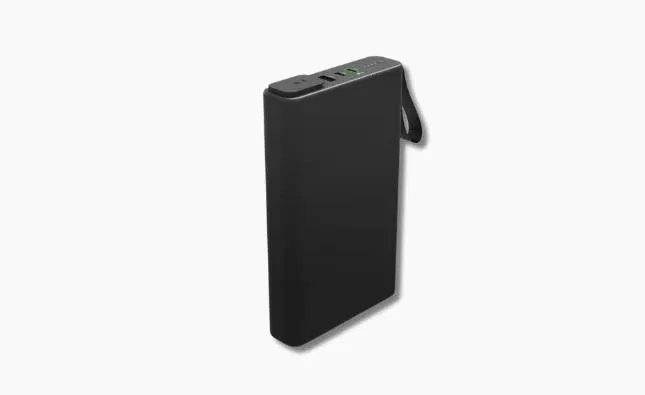
The Mophie Powerstation Pro AC is more than just a power bank—it's a promise of uninterrupted connectivity. Its robust design and high-capacity storage ensure that whether you're working, playing, or exploring, your devices remain powered. Known for its reliability and durability, it's a must-have for those who demand consistent performance, no matter where they are.
- Dimensions: 4.5 x 7.6 x 1.25 inches (114.3 x 193.04 x 31.75 mm)
- Weight: 2.6 lbs / 1.18 kg
- Capacity: 27,000 mAh / 99 Wh
- Outputs: 1 x 100W AC outlet, 1 x 60W USB-C PD port, 2 x 20W USB-A ports
- Input: 1 x 19V/2A barrel port
- Compatibility: Most laptops, tablets, smartphones and other AC or USB devices
- Wireless Charging: No
Price: $199.99
4. anker 737 power bank (powercore iii elite), the tech-savvy nomad's choice.
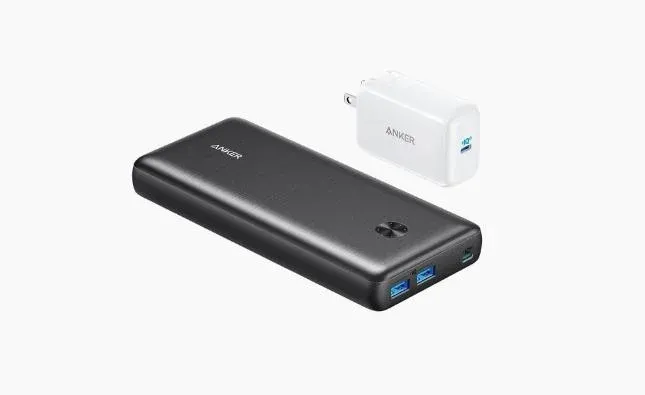
Anker, a brand synonymous with quality in the power bank industry, doesn't disappoint with the PowerCore III Elite . With a 25600 mAh battery capacity and 96Wh, it promises to charge laptops up to one and a half times and smartphones up to ten times. The power bank offers four ports, including two USB-C PD ports, one USB-A port, and a wireless charging pad, ensuring your devices remain juiced up whenever your travels bring you. The LED display makes it easy to monitor the charging status, and the inclusion of a travel pouch and two cables adds to its appeal. While it's slightly heavy, its premium design and fast charging capabilities make it a top choice for the digital nomads who appreciate a quality piece of tech.
- Dimensions: 7.22 x 3.24 x 0.94 inches (183.4 x 82.3 x 23.8 mm)
- Weight: 2.55 pounds / 1.16 kg
- Outputs: 1 x 87W USB-C PD port, 1 x 20W USB-C port, 2 x 18W USB-A QC 3.0 ports
Price: $129.99
5. maxoak laptop power bank, powerhouse for the heavy laptop user.
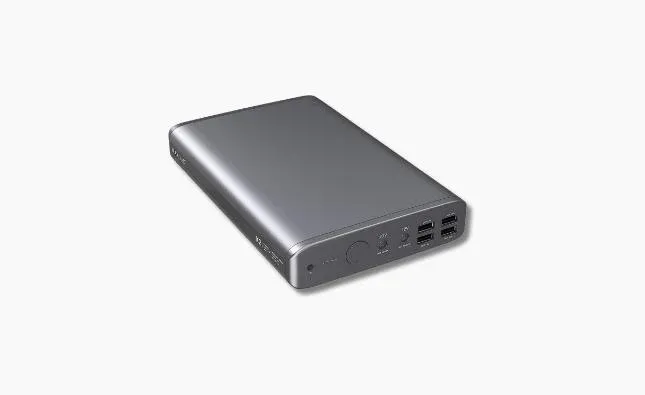
The MAXOAK Laptop Power Bank is designed for those who push their devices to the limit. With its impressive power reserve, it ensures that your laptop and other gadgets stay charged through long work sessions or binge-watching marathons on the go. Its durable design and efficient charging capabilities make it a favorite among power users who demand the best.
- Dimensions: 8.1 x 5.3 x 1.3 inches (206 x 135 x 33 mm)
- Weight: 2.77 lb / 1.26 kg
- Capacity: 50,000 mAh / 185 Wh
- Outputs: 1 x 20V/5A DC port, 1 x 12V/2.5A DC port, 4 x 5V/2.1A USB-A ports
- Compatibility: Selected laptops, tablets, smartphones and other DC or USB devices
Price: $180.34
6. dell power companion pw7015l, fast charging on-the-go.

The Dell Power Companion PW7015L brings the reliability and efficiency Dell is known for into the world of portable chargers. Designed to seamlessly integrate with your Dell devices, this laptop power bank offers rapid charging and long-lasting performance. For remote professionals and travelers alike, this power bank ensures you remain productive and entertained, no matter where you are.
- Dimensions: 7.7 x 2.7 x 0.9 inches (196 x 69 x 23 mm)
- Weight: 0.92 lbs / 417 g
- Capacity: 18,000 mAh / 65 Wh
- Outputs: 2 x 19.5V/3.34A DC ports, 2 x 5V/2.1A USB-A ports
- Input: 1 x 19.5V/2.31A barrel port
- Compatibility: Selected Dell laptops, tablets, smartphones and other DC or USB devices
Price: $139.99
Other remote work gear you may also be interested in:.

What to Consider When Choosing Your Portable Laptop Charger
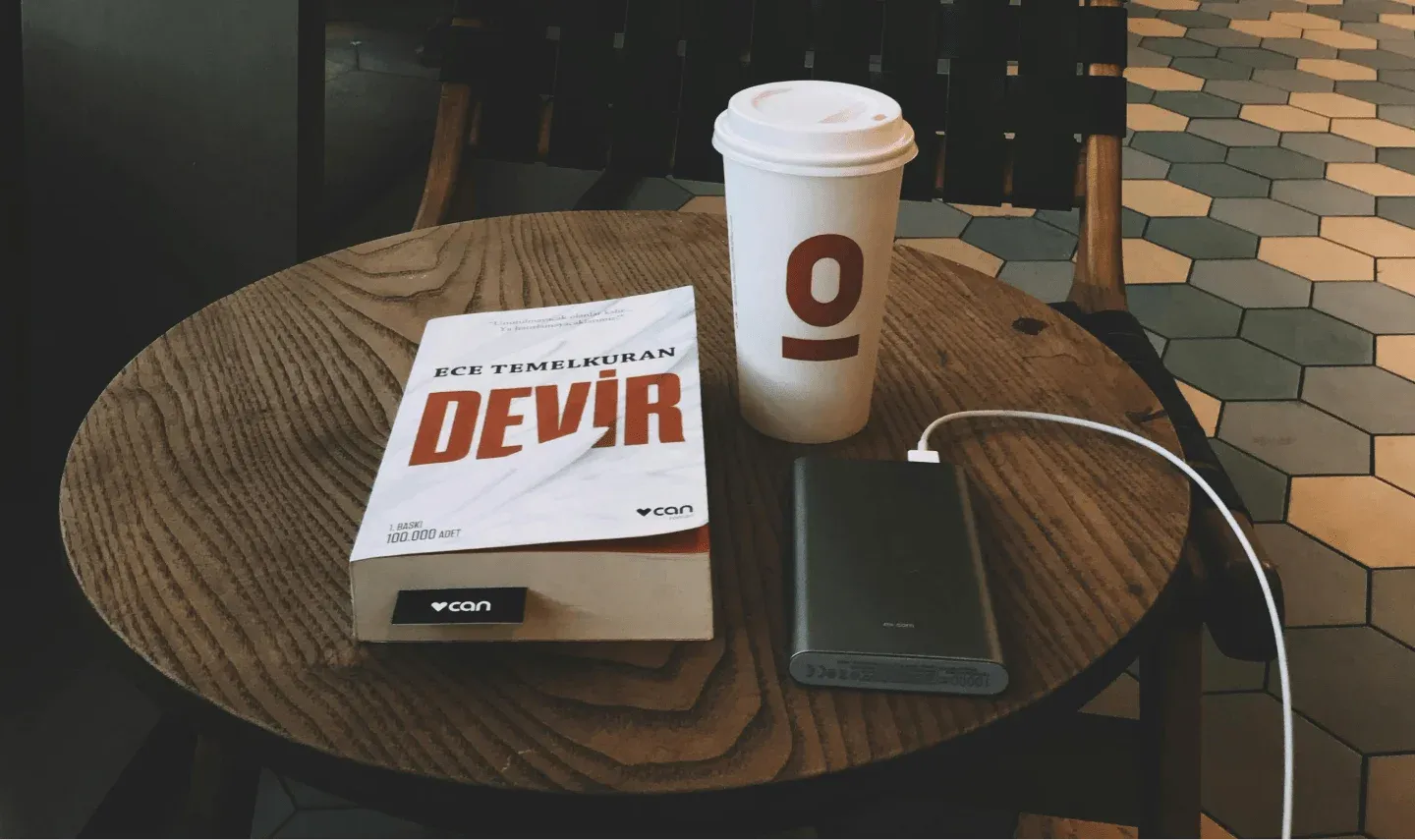
You browsed all the best power laptops but still undecided? We get it. Choosing a power bank for your laptop is not just about picking any bulky battery pack off the shelf. It's about finding that perfect travel buddy that's reliable, efficient, and just right for your adventurous lifestyle. When you're in the thick of travel or hammering out work in a remote location, the last thing you want is actually your tech running out of juice.
So here are the key features we think you should zero in on:
Capacity and Power Output
Think of capacity like your backpack's size - the bigger it is, the more stuff (or in this case, power) it can hold. But beware, bigger isn't always better if it means lugging around a brick. Balance is key. You need enough juice to keep your laptop and gadgets alive without weighing down your pack. Look for a power bank that matches your laptop's wattage requirements and has a little extra for your other devices.
Portability
Size and weight are your prime concerns here. You’re a remote worker, not a pack mule! Opt for a power bank that’s compact enough to slip into your daypack but robust enough to handle your power needs. Remember, every ounce counts when you're hopping from cafes to co-working spaces or jet-setting across continents.
Compatibility
This one's straightforward – your power bank needs to play nice with your laptop. Check the ports and connectors. If your laptop charges via USB-C, your power bank should support that. No use having all that power if it can’t connect to your devices, right?
Multiple Ports
Why settle for one when you can have more? A power bank with multiple ports means you can charge your laptop, phone, and maybe even your camera all at once. It's about efficiency and making the most of your time, whether you’re editing photos, drafting blogs, or just keeping all your gadgets alive on the go.
Fast Charging Capabilities
Time is precious, especially when you're chasing sunsets or deadlines. A power bank with fast charging can be a lifesaver, juicing up your devices in a fraction of the time. It means less time tethered to a power source and more time exploring or working where you love.
Durability and Safety
Your power bank should be as tough as your travel itinerary. Look for durable construction and safety features like overcharge protection. After all, it's going to be jostled in your bag, maybe take a few knocks, and still needs to perform. It's not just a gadget; it's your lifeline.
You may also be interested in:
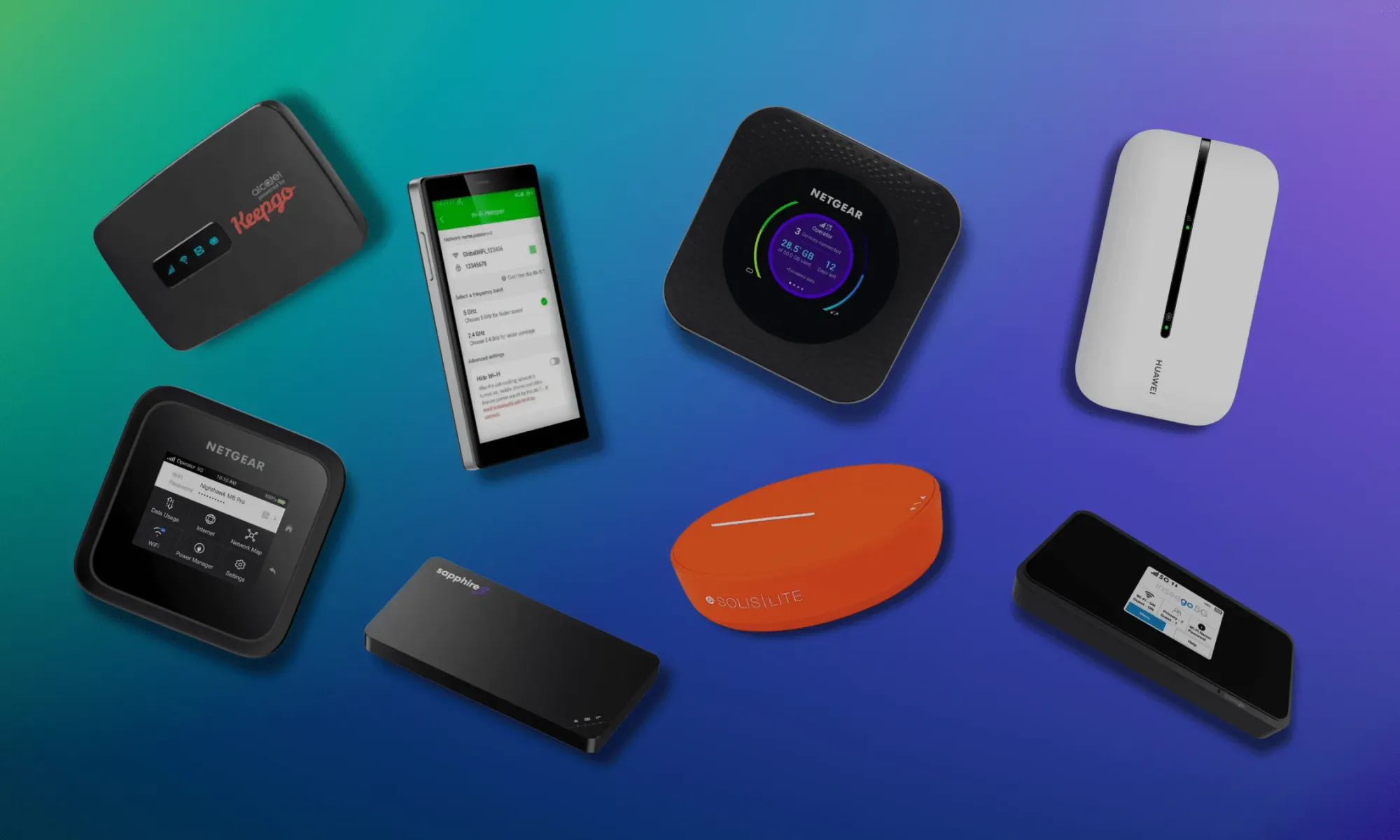
Portable Power Banks and Travel Restrictions
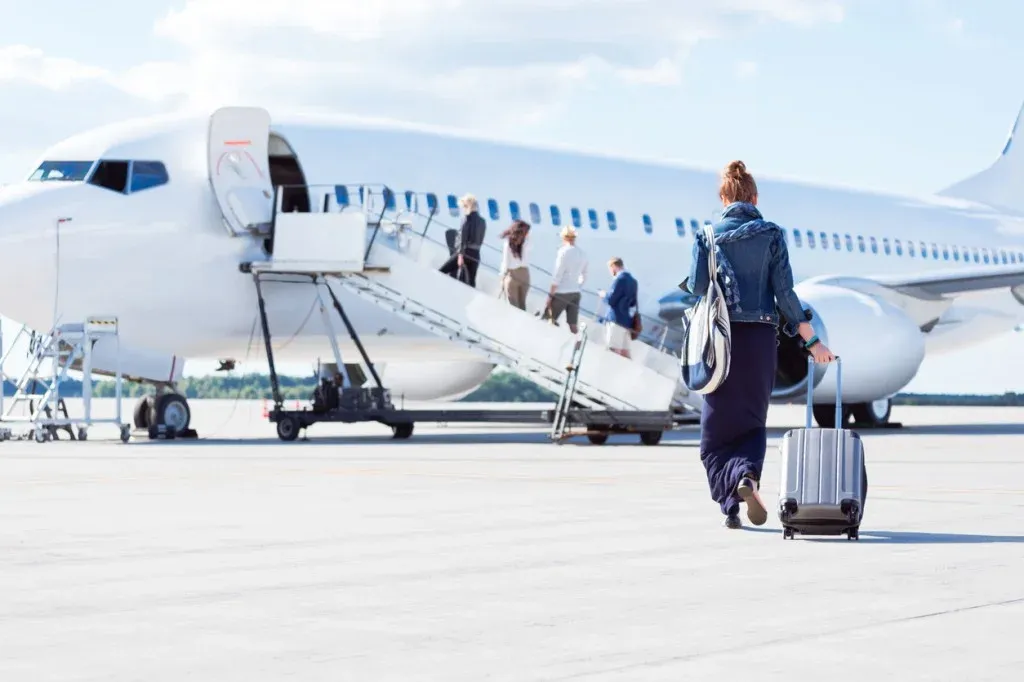
It's important to note that while portable laptop power banks are convenient for travel and remote work, there are some restrictions to keep in mind. Here are some that you need to absolutely be aware of:
Airline Restrictions
If you plan on traveling by airplane with your power bank, it's important to check the airline's regulations. Some may have restrictions on battery capacity or require them to be carried in carry-on luggage.
International Travel
If you are traveling internationally, be sure to research the voltage and plug types of your destination. Some countries may require a power converter or adapter to use your power bank.
Safety Precautions
Always make sure to properly store and transport your power bank according to the manufacturer's instructions. This will help prevent any potential fire hazards during travel.
How to Connect Your Power Bank to the Laptop
This is another big one that often gets asked. Fortunately, it's pretty quick and straightforward. Here's the step by step:
- Make sure your power bank is charged and turned on.
- Locate the DC output port on your power bank, which is usually labeled with a lightning bolt symbol.
- Connect one end of the charging cable into this port.
- Depending on your laptop, you may need to use an adapter tip, which is usually included with the power bank.
- Connect the other end of the cable to your laptop's charging port.
- Your laptop should start charging immediately.
- Once your laptop is fully charged, disconnect it from the power bank and turn off the power bank.
Ready To Pick Your Portable Laptop Power Charger?
If you want more digital nomad guides like these, sign up for our free newsletter and get upcoming articles straight to your inbox!

Sign up for our Newsletter
Receive nomad stories, tips, news, and resources every week!
100% free. No spam. Unsubscribe anytime.
You can also follow us on Instagram and join our Facebook Group if you want to get in touch with other members of our growing digital nomad community!
We'll see you there, Freaking Nomads!
Disclosure: Hey, just a heads up that some of the links in this article are affiliate links. This means that, if you buy through our links, we may earn a small commission that helps us create helpful content for the community. We only recommend products if we think they will add value, so thanks for supporting us!
Wise Travel Debit Card Review: Fees, Exchange Rates, Limits and How to Use It
How to set up and manage an esim on iphone, digital nomad internet: best wifi options for remote work anywhere.

- Gadgets Now
- Is it allowed to carry power banks in flights
- How the latest Galaxy A55 and A35 5G wrap peak performance and efficient functionality in one awesome package
- WhatsApp IP Protect Feature: What is it, how to enable, and related FAQs
- What is Bhashini, what are its objectives and how does it work
- E-wallet Scams: What are they, how do e-wallet scams work, how can you prevent e-wallet scams, and more
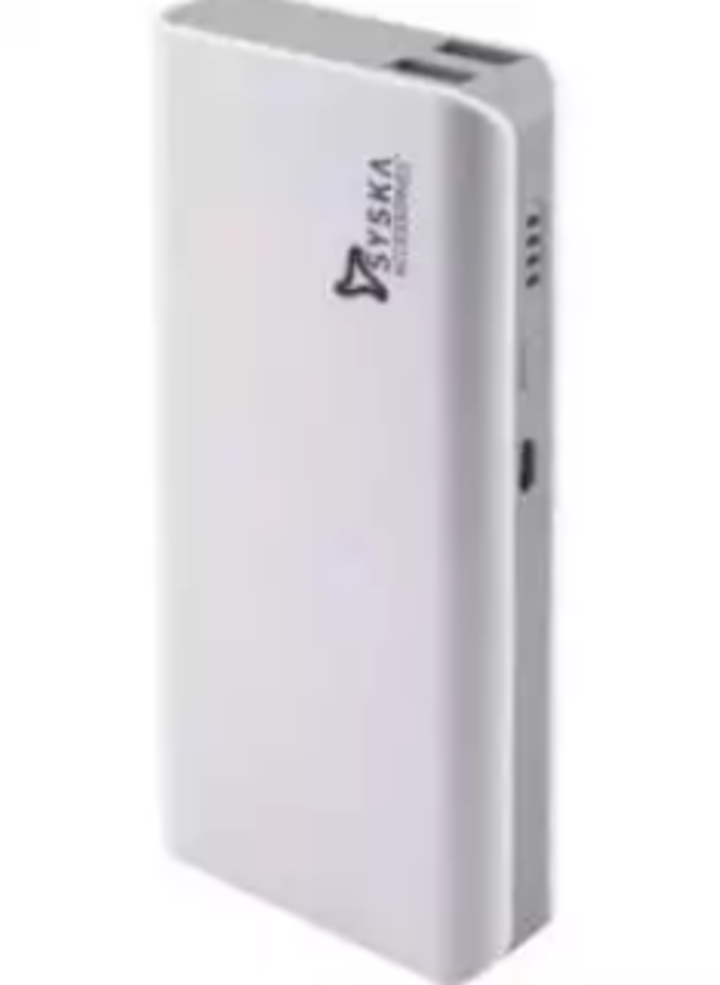
- Can I take my power bank in my hand luggage? You should not carry your power banks in the check-in luggage, but it is fine to carry a maximum of two power banks in your hand (carry-on) luggage in a flight (rules may differ from airline to airline). Some airlines permit you to take power banks up to 160Wh in your hand luggage, though anything over 100Wh must be checked with the airline.
- Why are power banks prohibited from your checked-in luggage? For safety reasons, airlines prohibit power banks check-in luggage. Power banks are actually batteries that make use of lithium cells. Lithium batteries have a propensity to catch fire and are therefore not allowed for cargo transport.
- How can I calculate the capacity of my power bank? Method to find Watt Hours of a power bank is mentioned below: Milliamp Hours/1000 x Voltage = Watt Hours (MAH)/1000 X (V) = (WH)
- How long does a power bank hold its charge? A high-quality power bank of a reputed brand can hold its full charge for three to six months with no battery loss. On the other hand, local or a low-quality power bank can hold its charge around four to six weeks.
Top Comment
Popular gadgets.
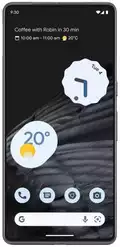
Trending Gadgets
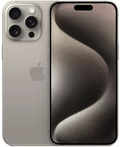

COMMENTS
Power Banks. Carry On Bags: Yes. Checked Bags: No. Portable chargers or power banks containing a lithium ion battery must be packed in carry-on bags. For more information, see the FAA guidance on portable rechargers. For more prohibited items, please go to the 'What Can I Bring?' page. The final decision rests with the TSA officer on whether an ...
Aukey USB-C Power Bank. Aukey USB-C Power Bank. Amazon. Available in black or white, Aukey's power bank has a 10,000mAh battery to keep your devices charged through the two USB-A ports and ...
Find your battery's mAh number. Find the voltage (usually 3.6V/3.7V). Divide the mAh number by 1,000, converting it to Amp hours (Ah). Multiply the Ah number by the voltage to get the Watt-hours. If you're still in doubt, this table based on common power banks may help: Milliamp Hours. Approximate Watt Hours.
Lithium batteries with more than 100 watt hours. Spare (uninstalled) lithium ion and lithium metal batteries, including power banks and cell phone battery charging cases, must be carried in carry-on baggage only. With airline approval, passengers may also carry up to two spare larger lithium ion batteries (101-160 Wh) or lithium metal ...
Power banks fall under the lithium batteries category, so the power, size, and weight restrictions are similar. Lithium batteries are used to power cell phones , laptops, or radio-controlled toys. Only those that don't exceed the limit of 25 grams of Equivalent Lithium Content (ELC) are allowed onboard the aircraft.
Carry-on Baggage Limit - 100 watt-hours (27027.03 mAh ) per battery. Or. Special Approval Spare Battery Limit - Max quantity 2 - 160 watt-hours (43,243.24mAh) batteries. Spare (uninstalled) lithium ion and lithium metal batteries, including power banks and cell phone battery charging cases, must be carried in carry-on baggage only.
You are allowed to bring multiple power banks on a plane, as long as each battery has a capacity of less than 100 watt hours, which is approximately 27,000 mAh. You will need airline approval to bring up to two power banks with a capacity of 101-160 watt hours (up to 43,000 mAh).
Anker 313 Power Bank (PowerCore 10K) When choosing a portable power charger for air travel, it's important to check the airline's specific regulations on lithium-ion batteries, as well as any restrictions on the size and capacity of power banks. It's also a good idea to carry the power bank in your carry-on luggage and not in checked baggage.
Portable chargers up to 100 Wh are allowed in United carry-on bags, with two spare lithium-ion batteries under 100 Wh each. Power banks over 100 Wh cannot go in carry-on or checked bags. United Airlines recommends that you carry supporting documentation for medical devices with built-in batteries that exceed 100 Wh.
What Sized Power Banks Are Restricted? The restrictions as per the Federal Aviation Administration are for lithium-ion batteries rated above "100 watt hours ... From storing power banks in your carry-on, to size limits, we hope you're better prepared for future air travel. For RAVPower's selection of power banks, please click here
Spare (uninstalled) lithium ion and lithium metal batteries, including power banks and cell phone battery charging cases, must be carried in carry-on baggage only. When a carry-on bag is checked at the gate or at planeside, all spare lithium batteries and power banks must be removed from the bag and kept with the passenger in the aircraft cabin.
American Airlines: up to two batteries, not exceeding 160Wh each. Air Canada: maximum of two power banks with a rating of 100Wh but not exceeding 160Wh (above 100Wh, you need approval from the Air Canada's airport agents) Delta: one or two power banks up 160Wh each (if higher than 100Wh, approval is required) Air India: up to 20 power banks ...
Power banks are made of lithium-ion batteries. To say that lithium-ion batteries are prohibited on a plane is not valid. You can carry a power bank on a plane. Yet, they need to be taken or packed ...
If you're planning on traveling with power bank, it's important to know the size and capacity restrictions set by airlines. Most airlines allow power banks with a capacity of up to 100Wh or 27,000mAh, but with airline approval, you can bring along two larger spare batteries that reach up to 160 Wh. So, it's always best to check with your ...
Passengers are permitted to travel with lithium ion batteries that contain a maximum of 160-watt hours per battery. Any lithium ion battery containing more than 160-watt hours is prohibited from carriage on all passenger aircraft. Lithium ion batteries installed in a personal electronic device can be transported as checked or carry-on baggage.
Learn about the travel restrictions for power banks and what you need to know before you pack them for your next trip. Understand the rules and regulations regarding power banks to ensure a hassle-free journey. 525 Main St, Worcester, MA 01608. Mon - Sat: 9:00am-18:00pm. Sunday CLOSED. 508-653-3352. North America. United States; Canada;
Carry-On Luggage: All battery packs, including power banks, must be packed in carry-on baggage.They are not allowed in checked luggage due to safety concerns.; Capacity Limit: The maximum capacity ...
POWER BANK TRAVEL RESTRICTIONS - CAPACITY. Avoid carrying a power bank that is enough to energize an entire neighborhood. If you do not want to go through the hassle of obtaining airline approval to take your portable charger on flight, make sure that you are bringing one with a capacity of no more than 100Wh. A power source above this ...
You can travel with personal care items in your carry-on bag if they are: Travel-size (3.4 ounce containers or smaller) In a clear, plastic, one-quart zip-top bag; You can travel with personal care items in your checked bags if: You have no more than 70 ounces in total; Each container has no more than 16 fluid ounces; Carry-on bags
podoru Wireless Portable Charger. Amazon. View On Amazon $36. Why We Love It. Paired with a magnetic case, it can charge right on the back of your phone without a cord. What to Consider. It will ...
5. MAXOAK Laptop Power Bank. Powerhouse for the Heavy Laptop User. The MAXOAK Laptop Power Bank is designed for those who push their devices to the limit. With its impressive power reserve, it ensures that your laptop and other gadgets stay charged through long work sessions or binge-watching marathons on the go.
You should not carry your power banks in the check-in luggage, but it is fine to carry a maximum of two power banks in your hand (carry-on) luggage in a flight (rules may differ from airline to airline). Some airlines permit you to take power banks up to 160Wh in your hand luggage, though anything over 100Wh must be checked with the airline.
If you wish to travel with any such goods or materials, please be aware of the restrictions or steps you may have to take to travel on one of our flights. On this page. ... (rucksack, suitcase or similar) that may contain a lithium battery/power bank. This device is often used to recharge personal electronic devices (PEDs) i.e. phones, tablets ...